October 13, 2019
Martha O'Kennon



There were a couple of lovely days this week, when it was not raining and grey, but not much in the form of pretty flowers. The asters are about kaput, the goldenrod is not yellow but rather a combination of brownish petals and white fluff which must contain the seeds. The colchicums are about done but we still saw a few individual flowers.
Remember that there is information in the name of the file for each image. You can see it by mousing over the image - look at the lower left of the screen. Or you can click on the image to get to the (usually) larger image. Then the info is displayed in the address line above. Sometimes the second click will actually display a different view of the original image.
Ants? Did you want ants? I hardly saw any on the shop siding, that mecca for ant track practice. But I revisited that Tilia cordata tree across the street, which I'm counting as an honorary annex to my yard now. There there were many sites of activity within easy reach. Here are some Small Honey Ants with a lot of grey nymphs, which might be of some kind of Aphids. In picture 2, we see a creature that looks large in comparison with the little nymphs. It might be an adult Aphid of some sort, maybe even the adult form that these nymphs will grow up to be. In picture 3 we see an individual adult.
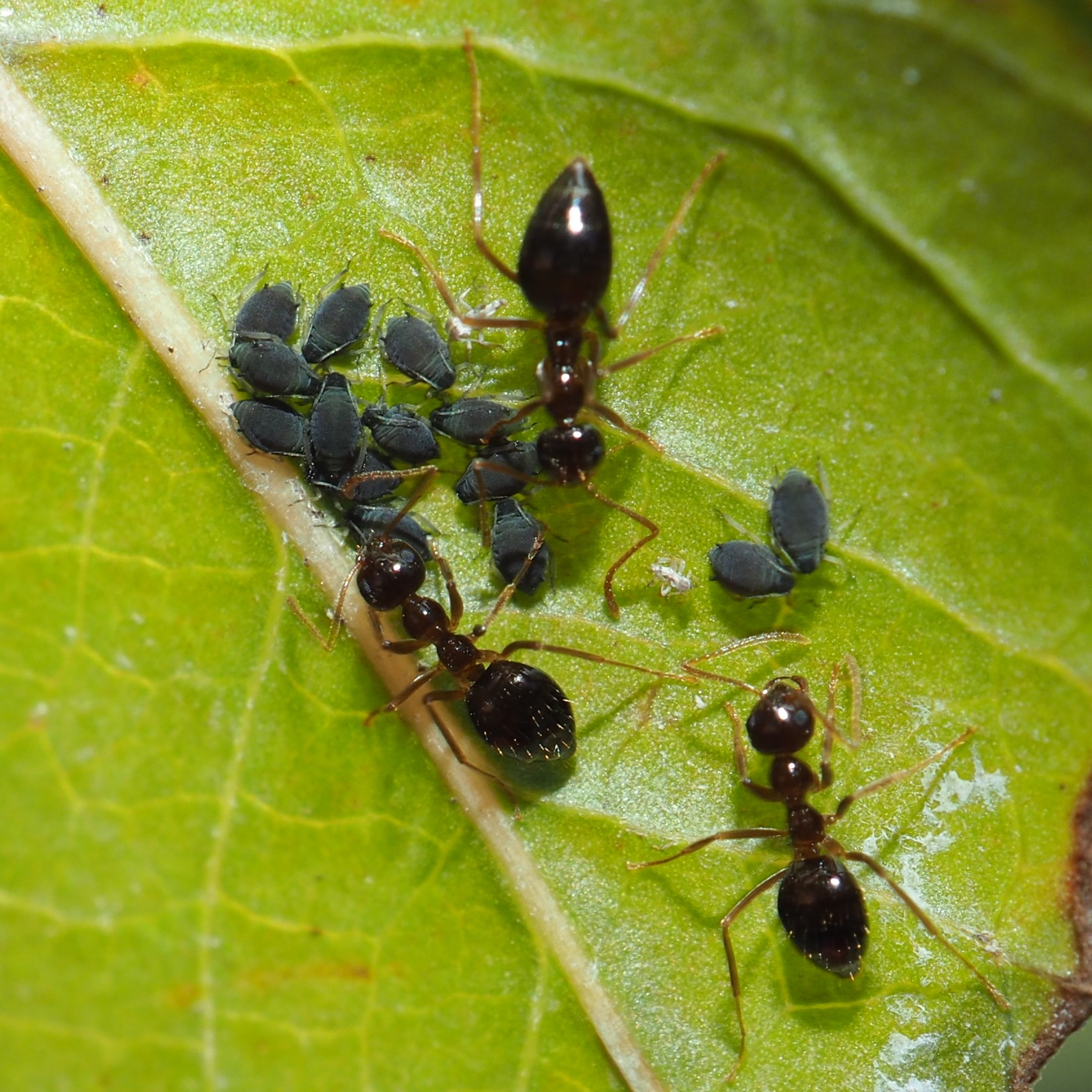
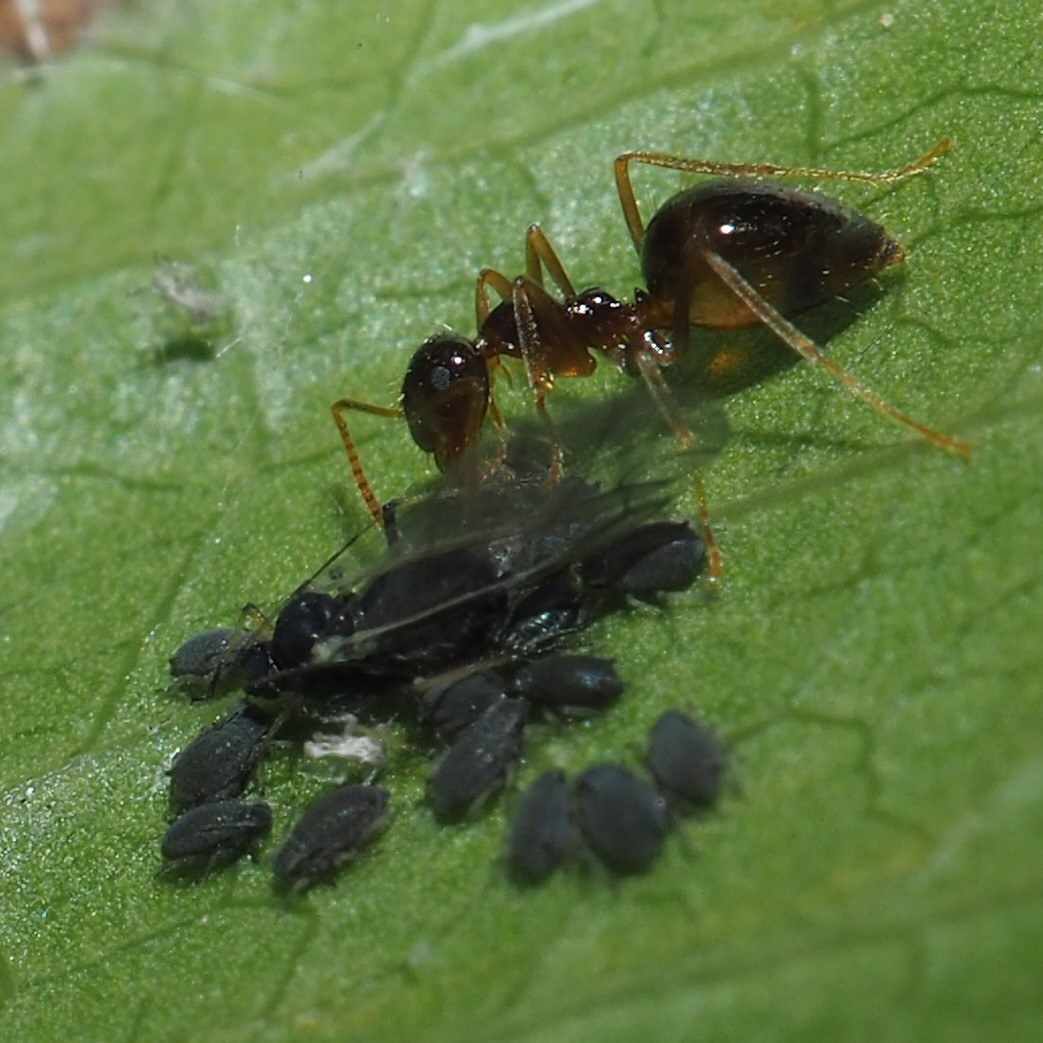
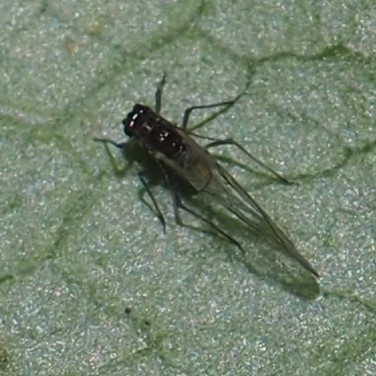
Here is a Diapriid, in the same order with the Ants and Wasps. It looks like something in between them. The third picture shows something that I thought was an Ant when I took it. But the antennae don't look like Ants' antennae.
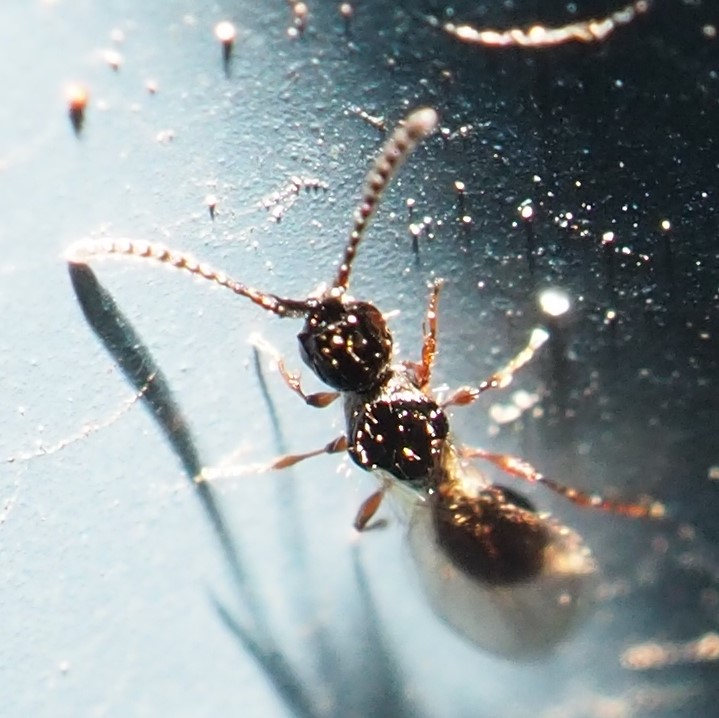
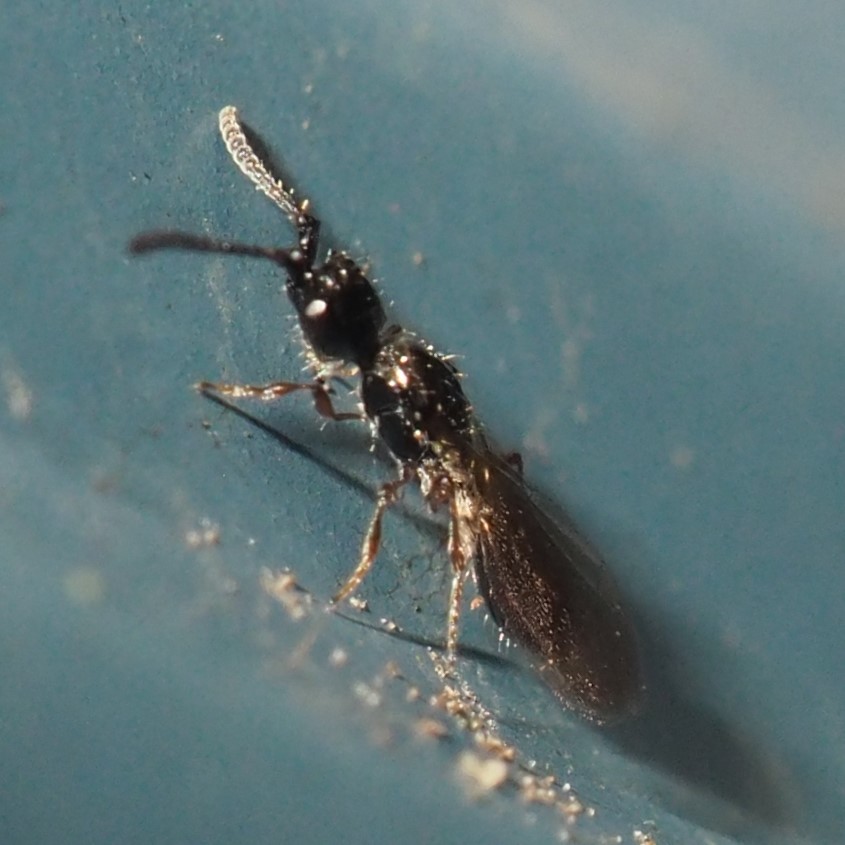
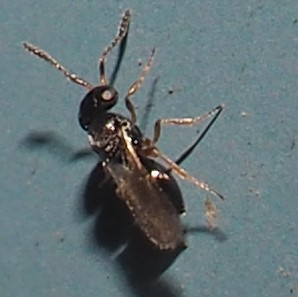
Do you remember this picture of a nymph of some creature that I found on the T. cordata last week, thinking that it might be the nymph of that Lime Leaf Aphid? Well, I have been seeing some similar little beasties on the shop siding ever since then. They don't look exactly alike: this one found across the street is distinctly yellow with red eyes, while "mine" have grey eyes and four spots and seem to be more tannish.
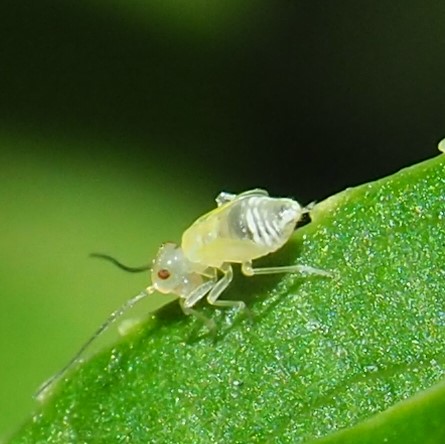
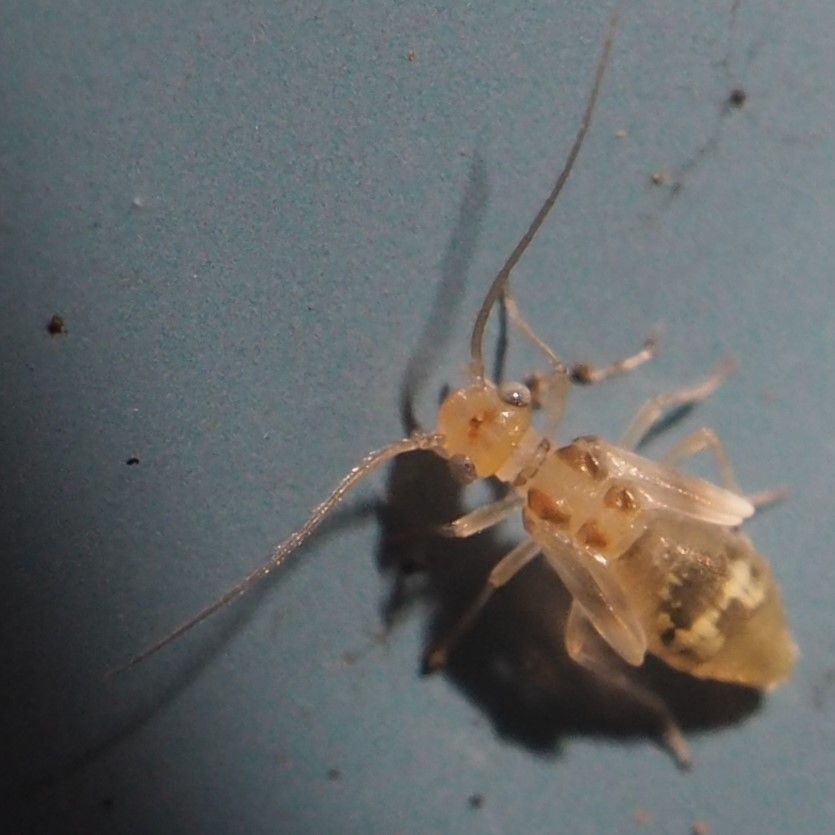
Picture 1 shows two of these nymphs with a mysterious white thing that might have been an empty shell after something molted. But look at picture 2, taken a day later than picture 1. One of the nymphs has disappeared and there are now TWO empty skins. I wonder where the other nymph is and what differences I'll see when I find it. (And no, I don't know why there seems to be a lot of spider silk over the grouping.) Third was just taken yesterday, October 12. It shows a new Barklouse which seems to have just molted from one of those skins! It doesn't have any stripes, etc, yet. Those things will develop after the new Barklouse has been out of the skin for a while longer. Picture 4 was taken October 11 and shows an adult that looks has the brown spots of our nymphs. I'm positing that we now know what those nymphs really were.
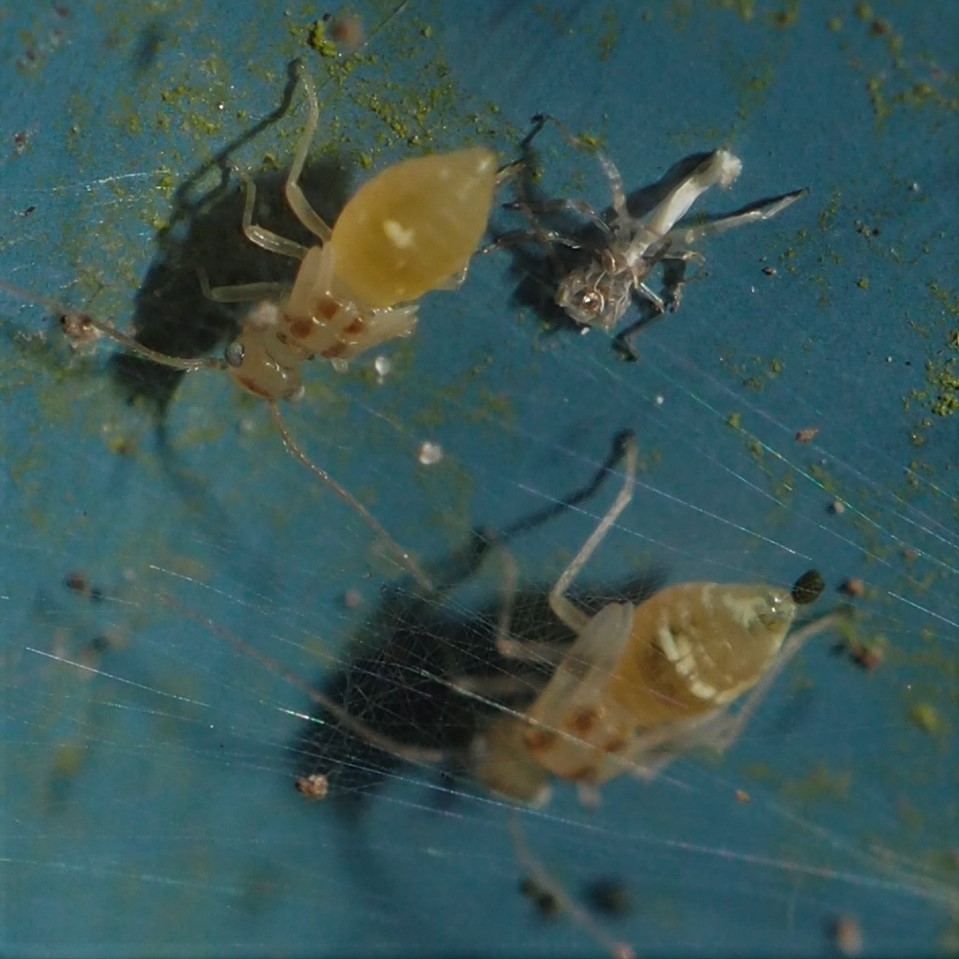
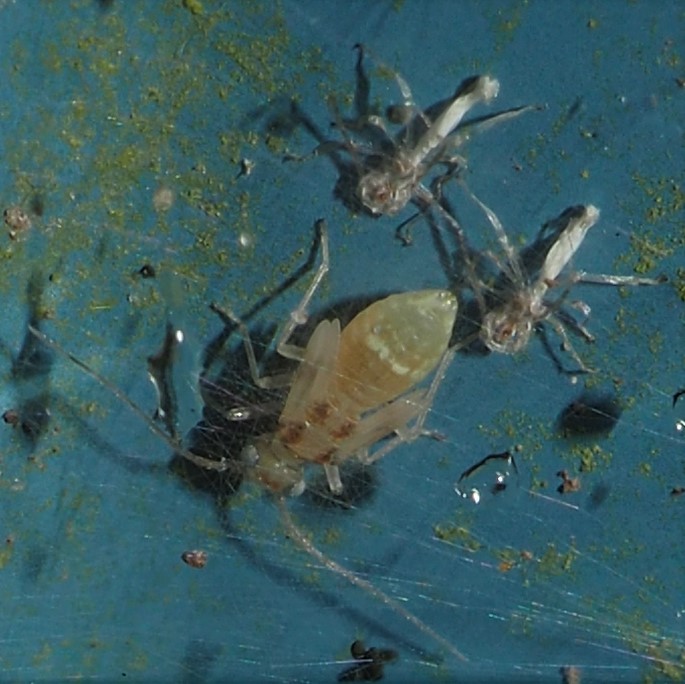
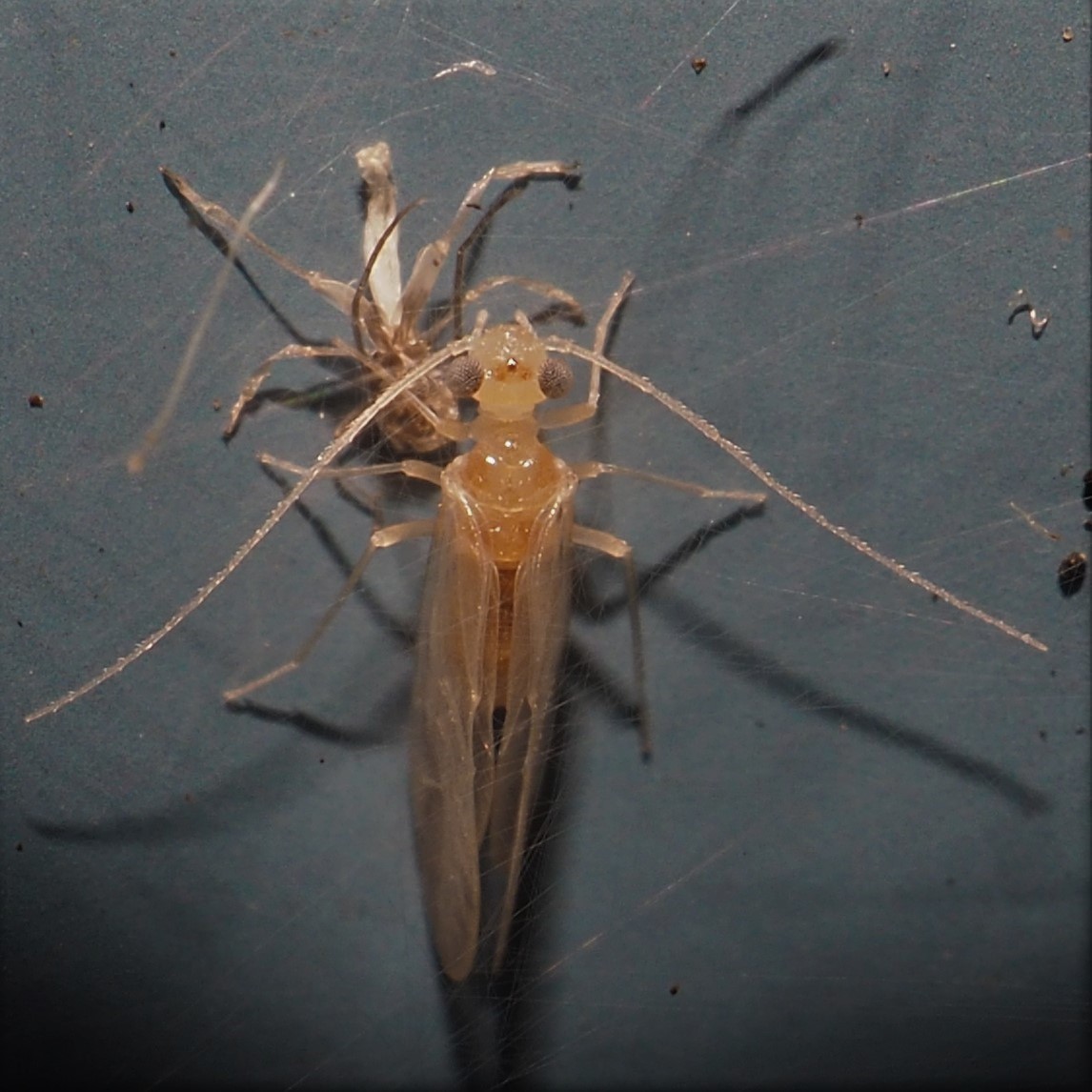
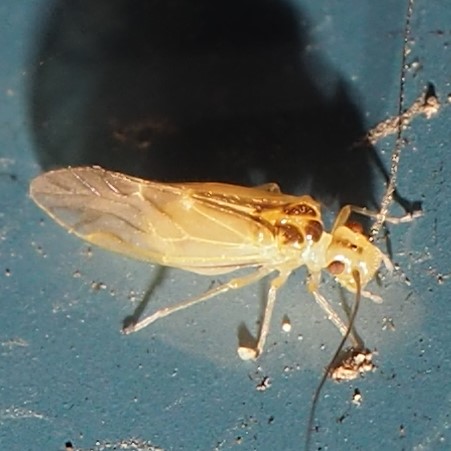
The "tiger" Barklice seem to be multiplying. I saw many more this week than last. Picture 3 shows the only Polypsocus corruptus, so they SEEM to be trading places. Meanwhile the Scaly-winged Barklice (Echmepteryx hageni) are certainly holding their own.
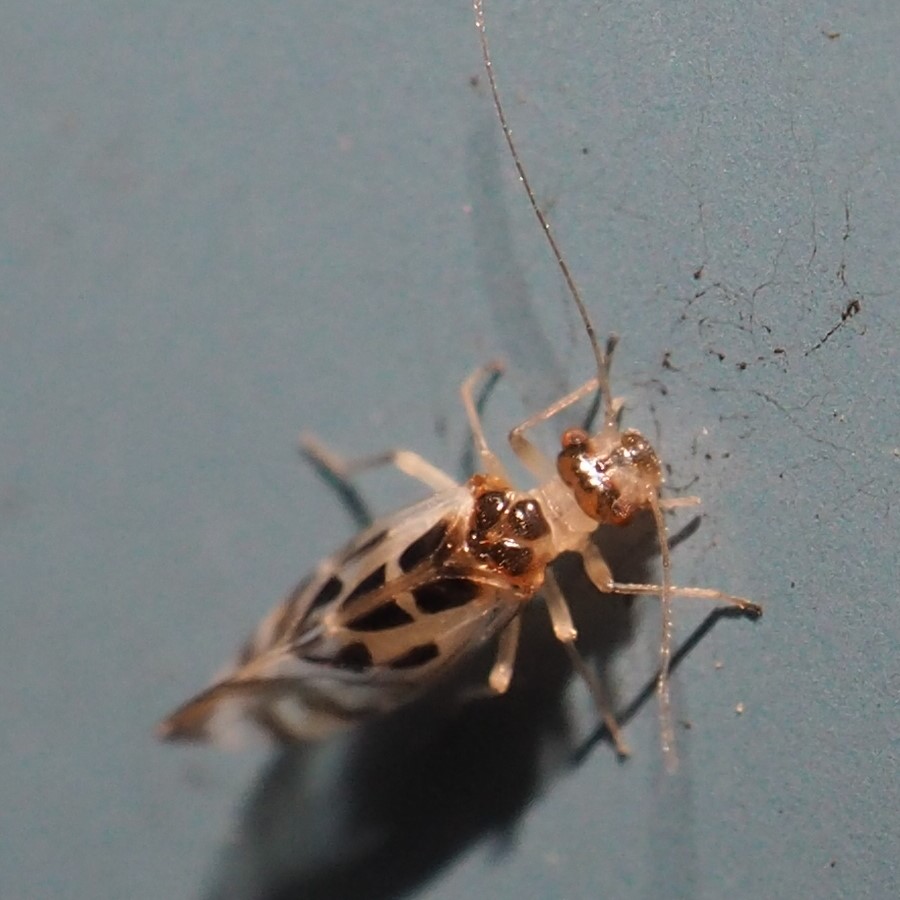
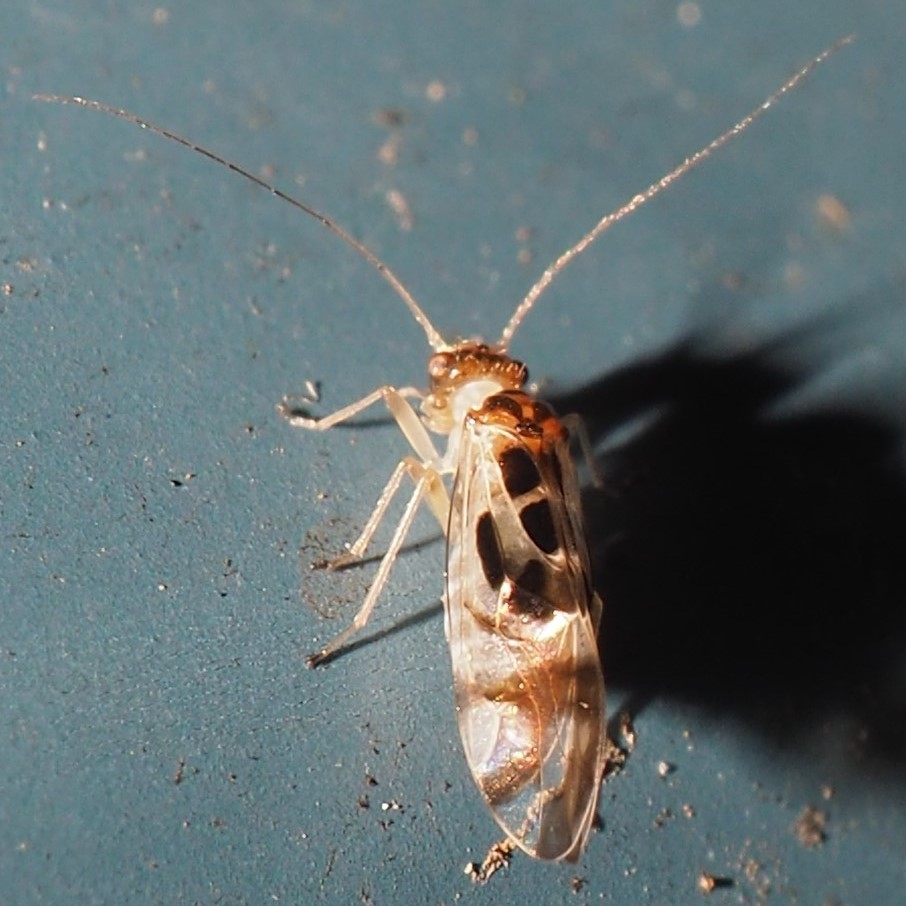
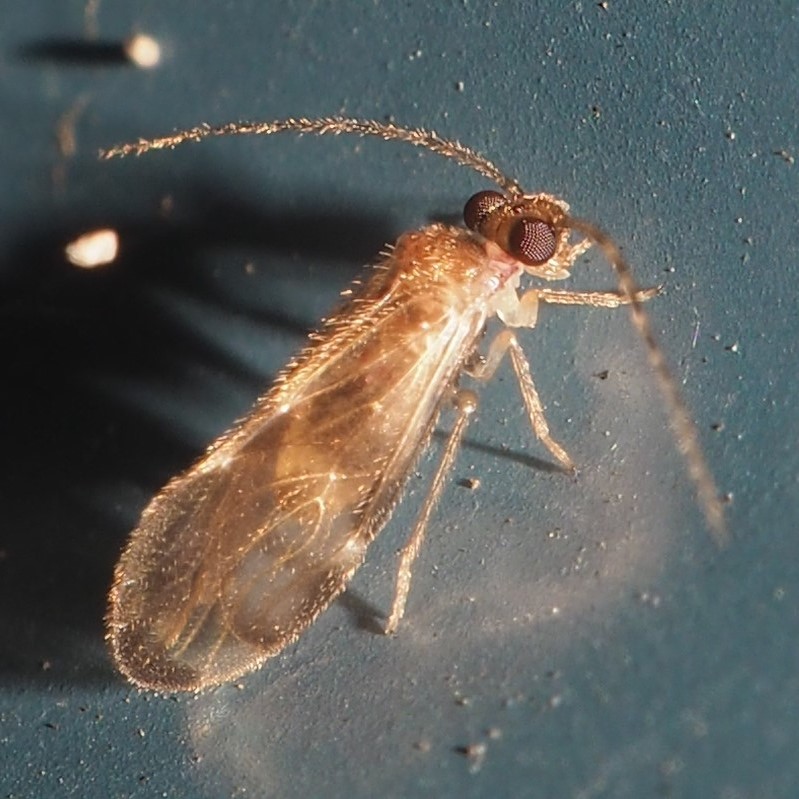
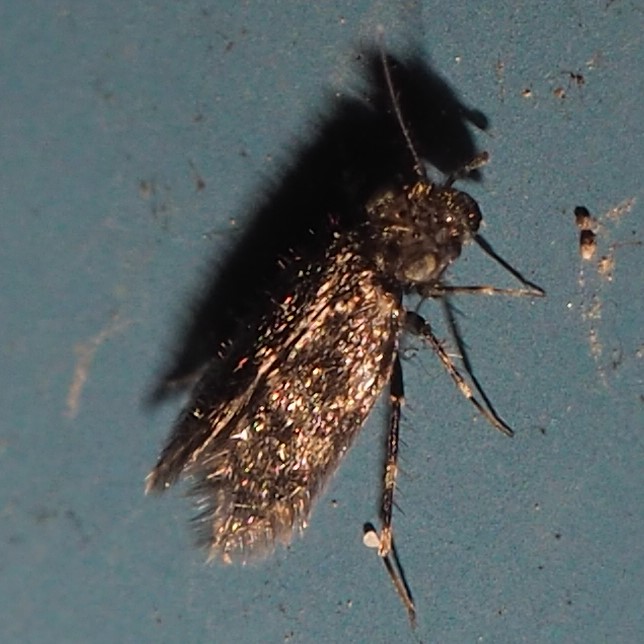
Last of the Barklice. The new one we saw last week, Trichadenotecnum alexanderae, was back this week. and we also had a new one for THIS week: the one that was the adult form of the nymphs above.
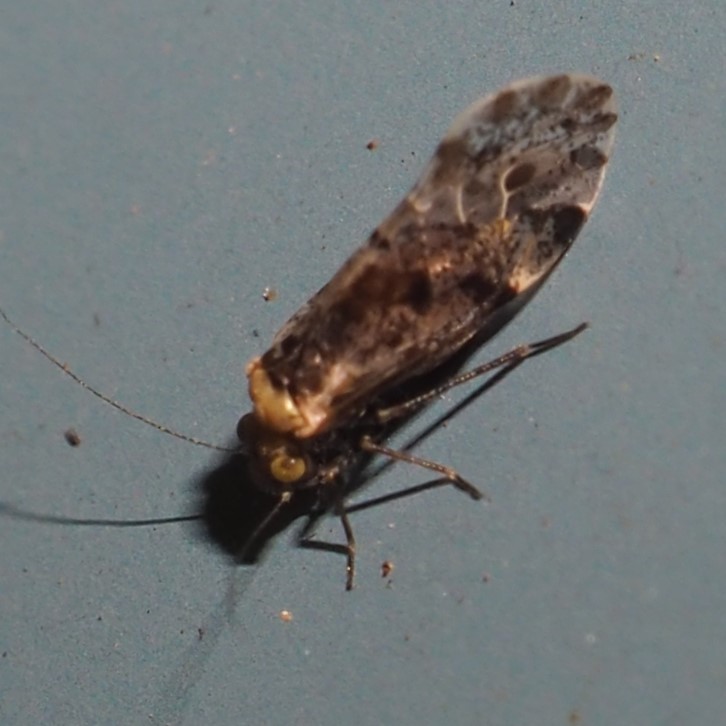
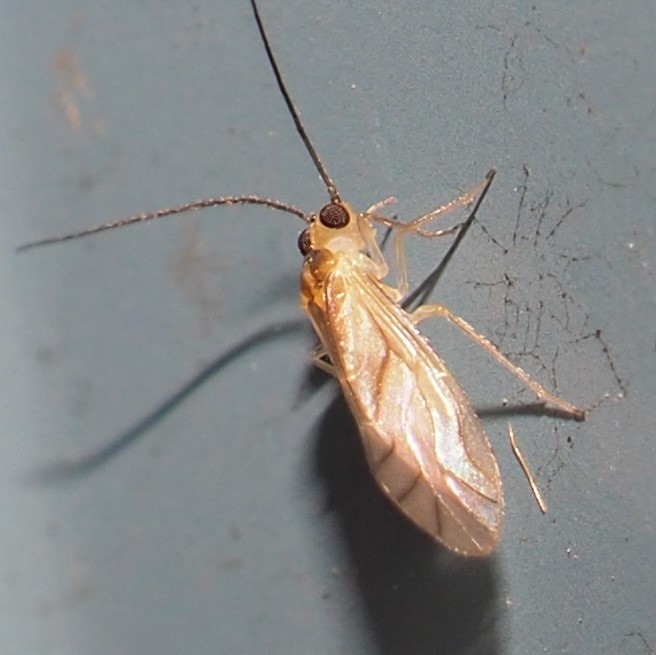
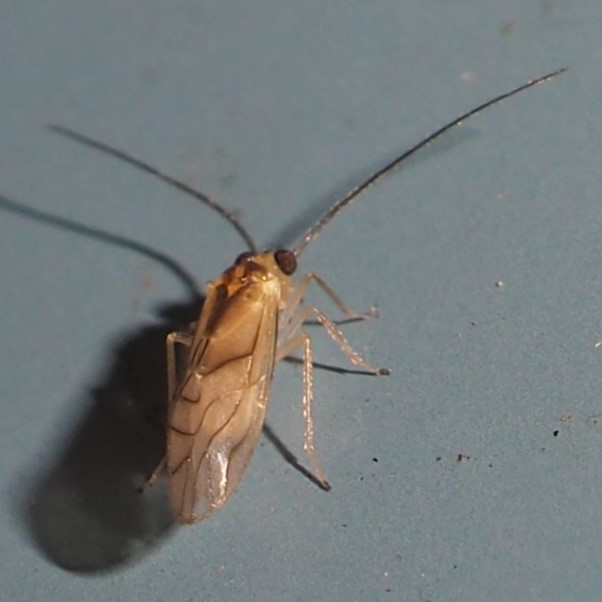
No bees! The end is really near. (The end of what? Well, the end of the part of the year when there are lots of bees.) Not too many beetles this week either. This mystery beetle is in genus Paria. Second is a Striped Potato Beetle, and last is the larva of one of the Lady Beetles.

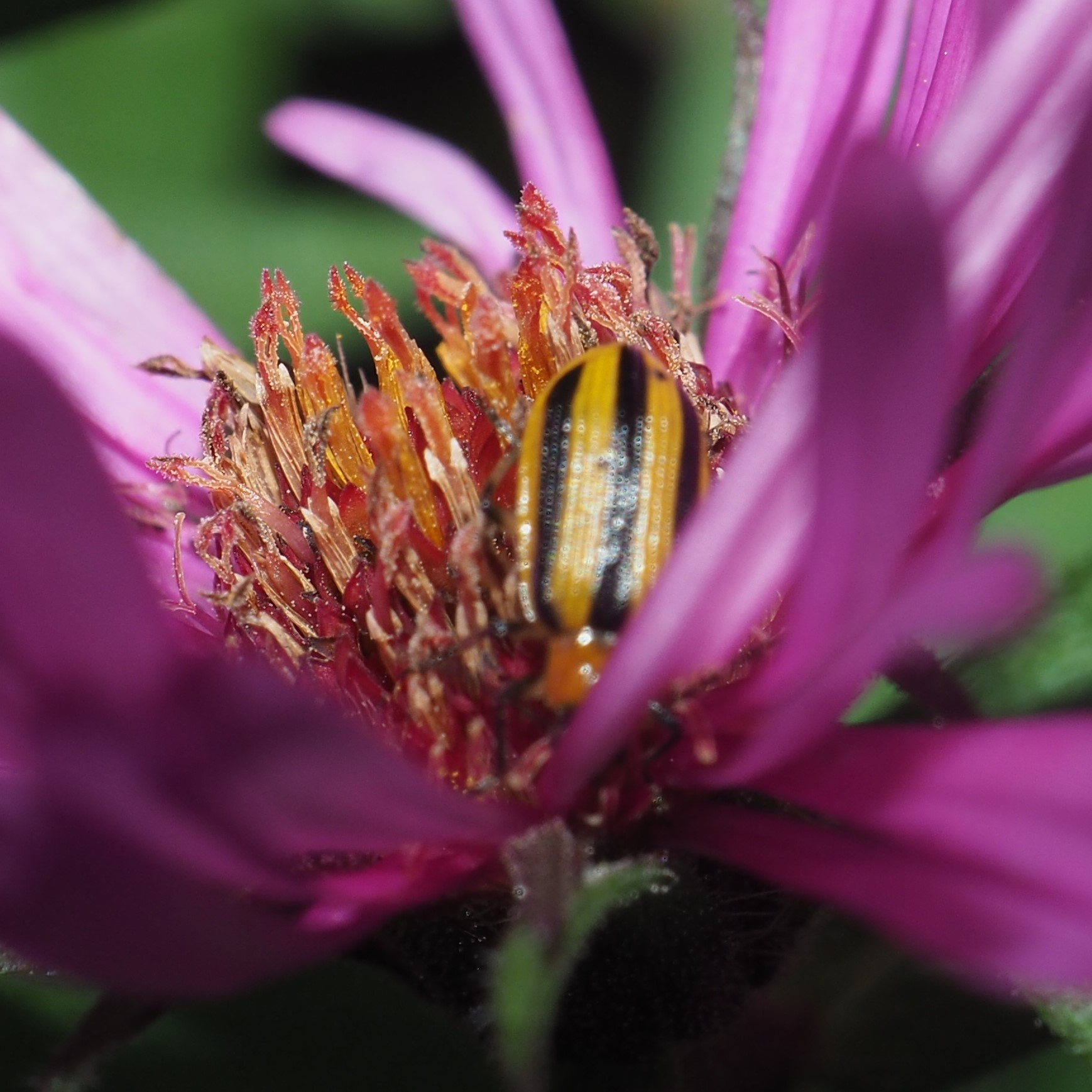
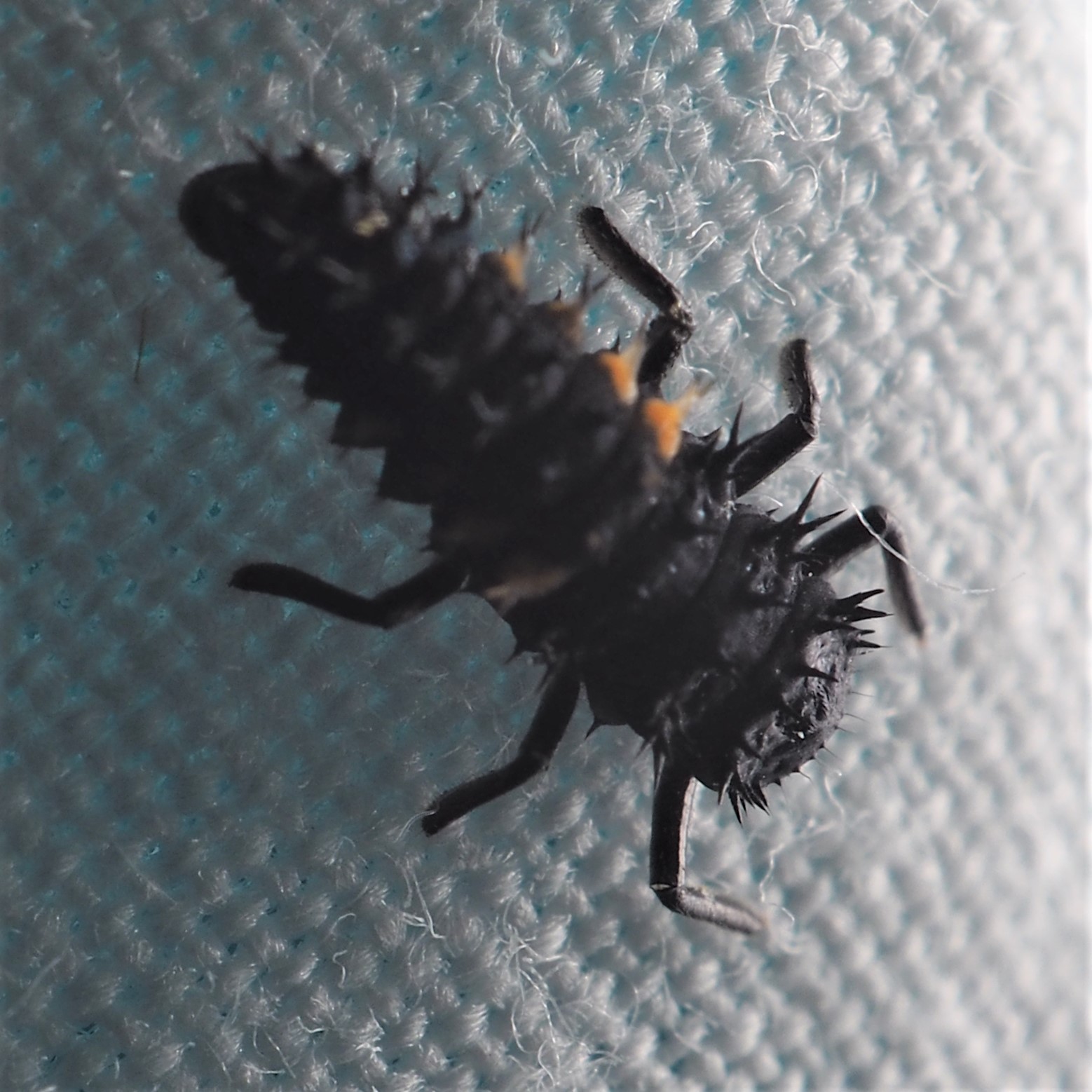
So we are now in the land of the Bugs. Hooray or Oops, there are still nymphal Assassin Bugs. Who knows if they will turn into adults before the onset of winter, or if they hibernate in nymphal form or maybe in adult form? Anyway, here's the last of the "bug in a flower" pictures. First is the usual Pale Green Assassin Bug (Zelus luridus, sitting in the center of a yellow Zinnia. The second fooled me. We are supposed to have only two species in the genus Zelus. This one doesn't have particularly red eyes, so it doesn't seem to be Z. luridus. The only other choice is Zelus tetracanthus. I'd never seen one of them that wasn't mostly greyish brown. But I found an adult in the photos in iNat that had an abdomen the colors of this one's abdomen. So let's go with Z. tetracanthus. It's pretty anyway, isn't it?
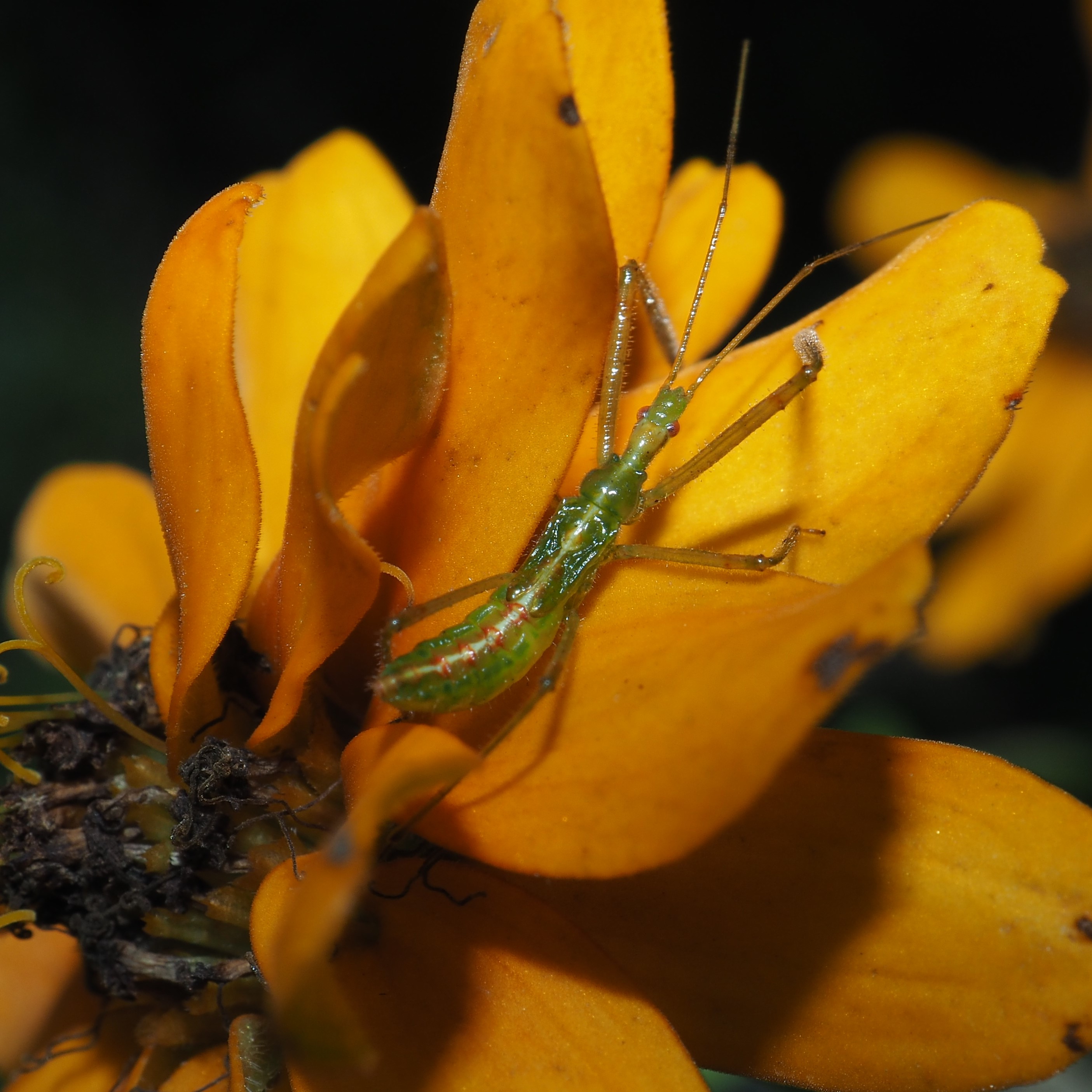

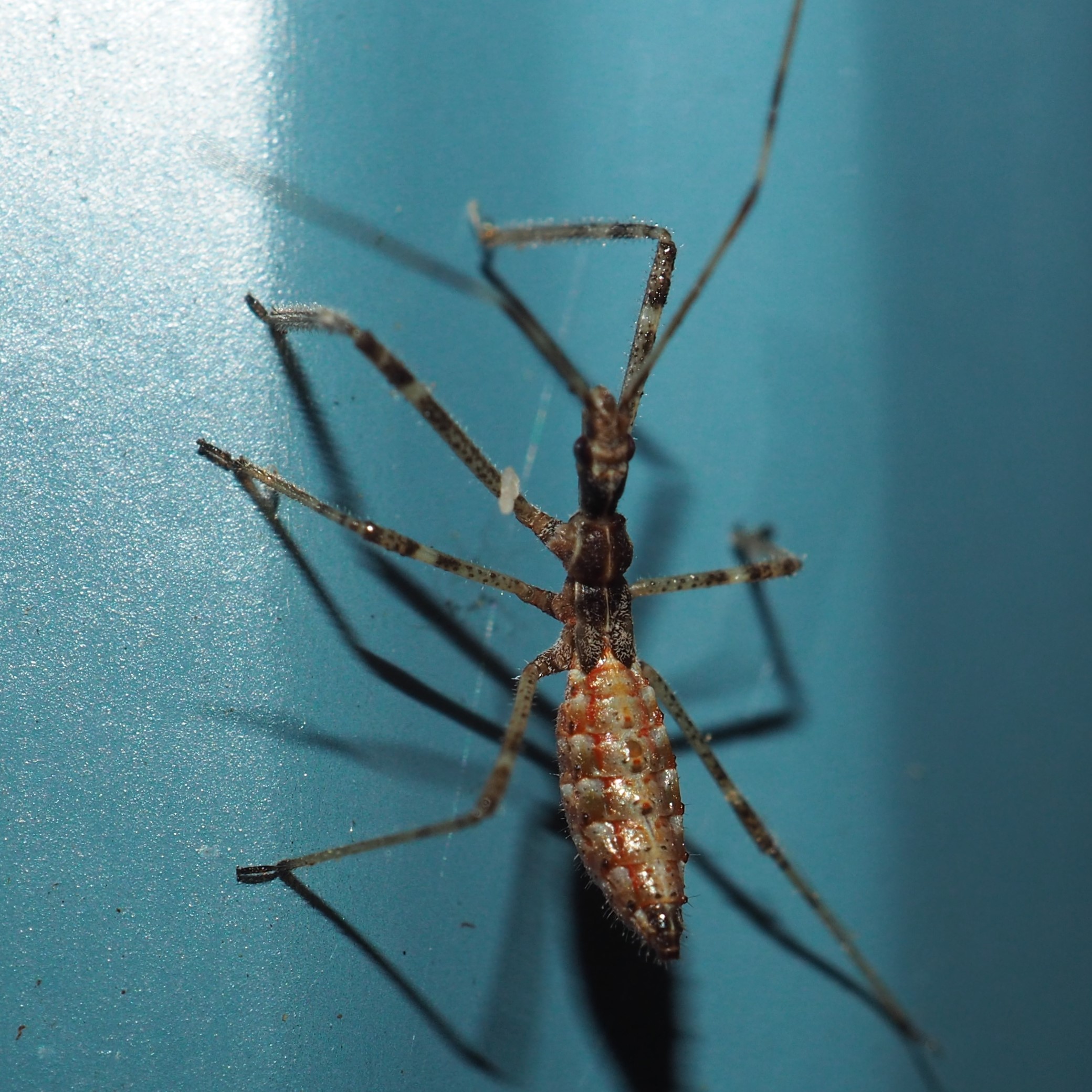
Here it is - the bug known only by its Scientific name, Drymus unus. We had been looking for it last week and thought we had photo evidence. But here is another shot that is certainly D. unus! Another bug genus that seems more common in the fall are the Lygus Bugs, as in picture 2.
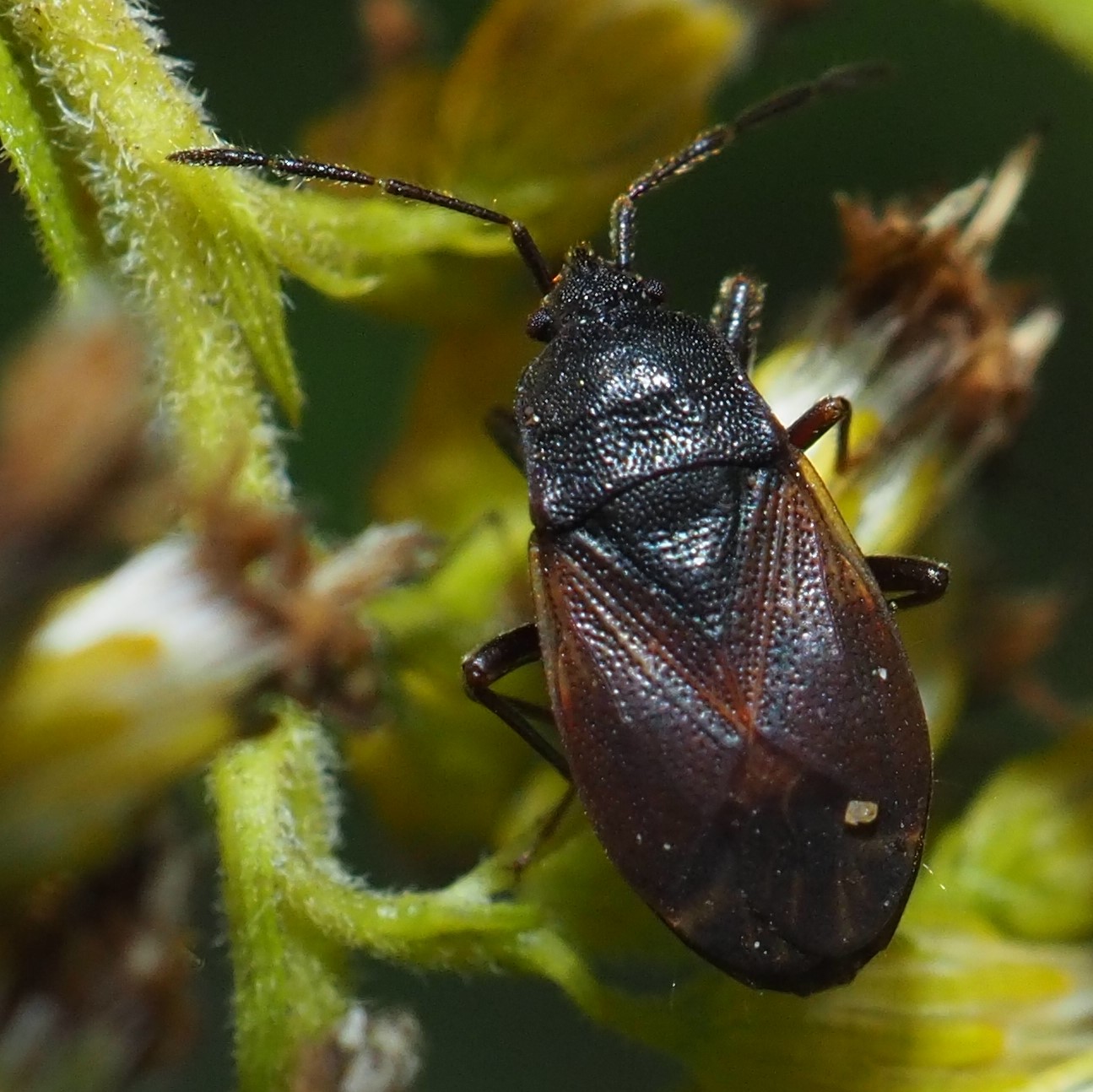
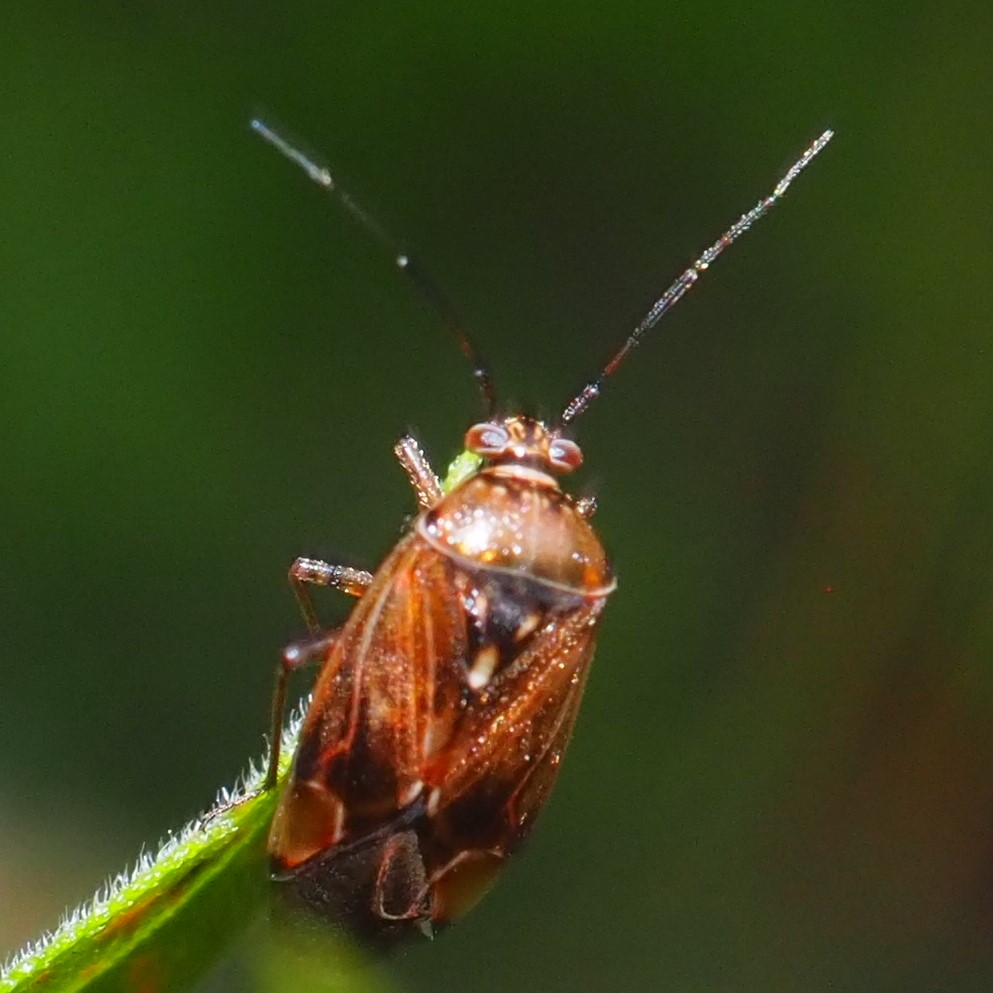
Now we are into the thick of the Leafhoppers. We had quite a lot of different species. First, look at these five hoppers that all seem rather similar - but probably each is a different species in the same genus Eratoneura. *Number 4 has just been ID'd as E. ardens (note from October 13 blog)*. Leafhoppers are one of the most numerous kinds of insects, and the diversity is amazing!
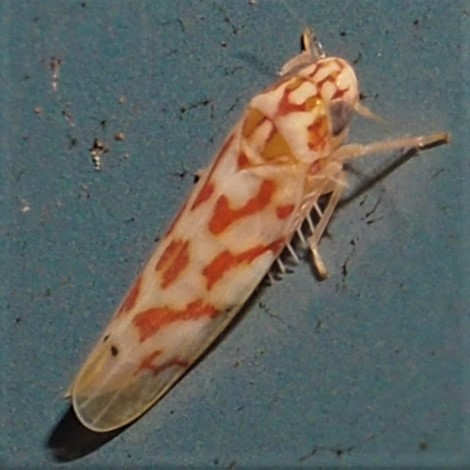

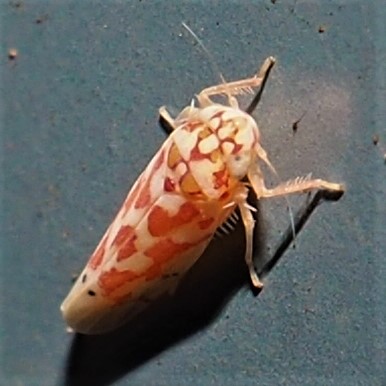

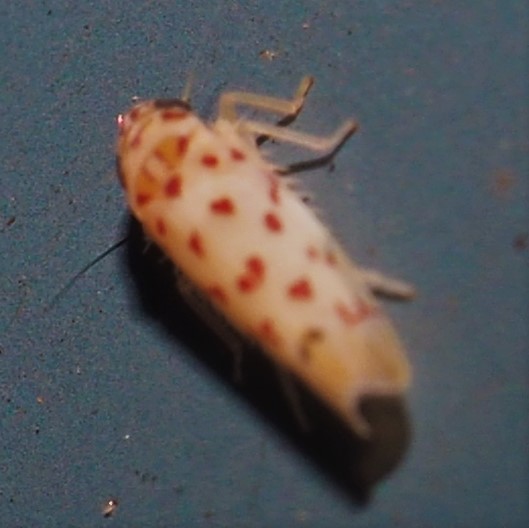
This Leafhopper is one that we see often enough to recognize: Erasmoneura vulnerata. I'm sure I've seen the second one too, but don't know if I have seen a name for it. It looks like one of the Scaphoideus genus, though. The third is definitely indefinite. The fourth one also appeared May 8, I believe. It is the Three-banded Leafhopper, Erythroneura tricincta.
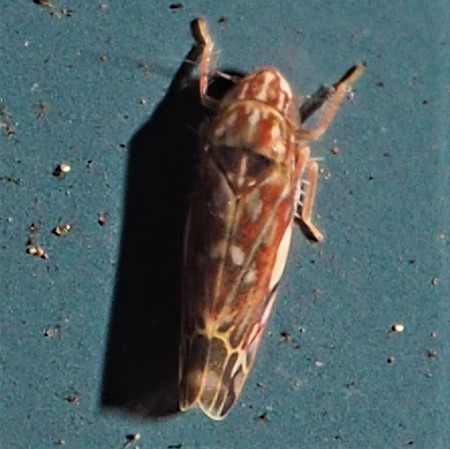
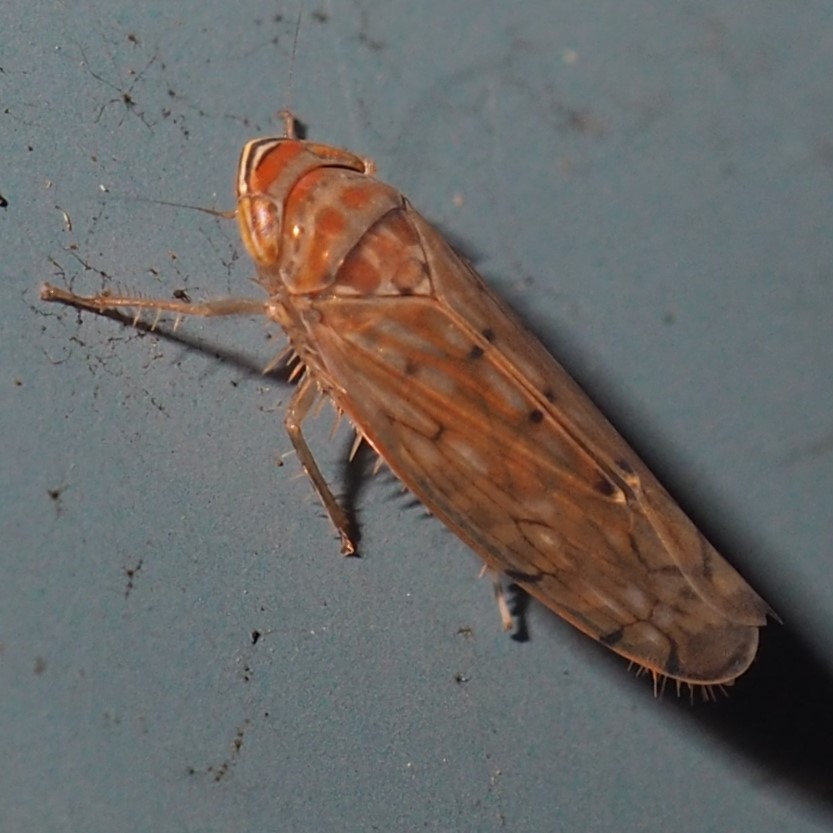
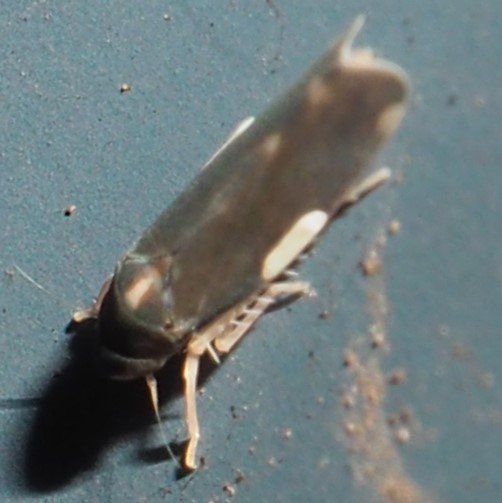
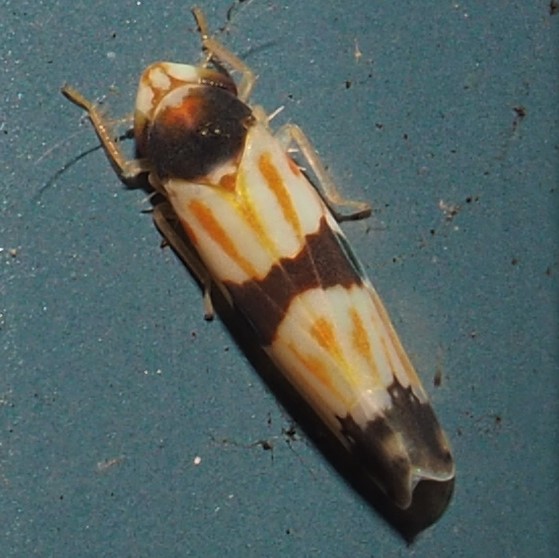
This next puppy is probably a Planthopper, and probably the nymphal form. Some of these creatures resemble strange frogs. I don't know what I'd call this one, though. It is definitely NOT a Leafhopper. Number 2 is another mysterious one: it looks like the caterpillar of some kind of moth, but is more likely to be a species of Bristle Millipedes (Genus Polyxenus).
Number 3 IS a Moth, but looks so much like other Moths that I couldn't venture a guess. It too goes into the Submit Basket.
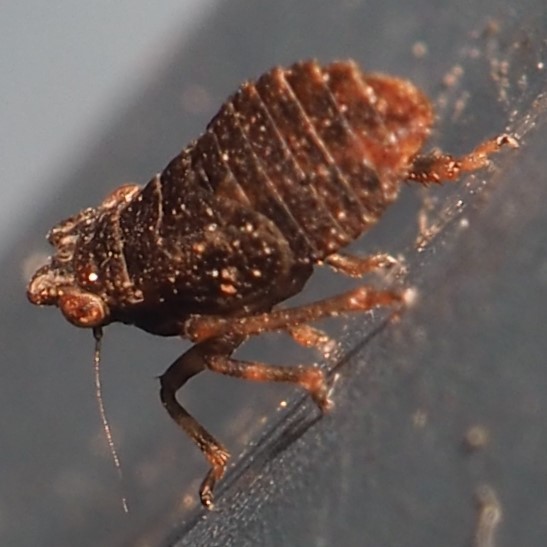
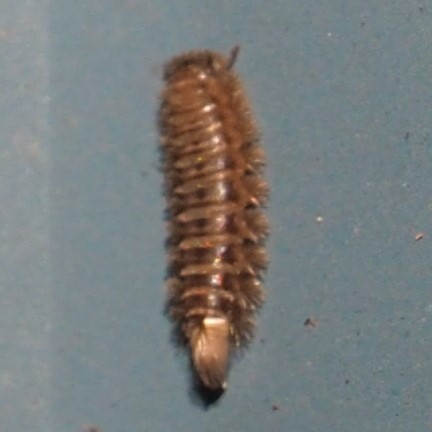
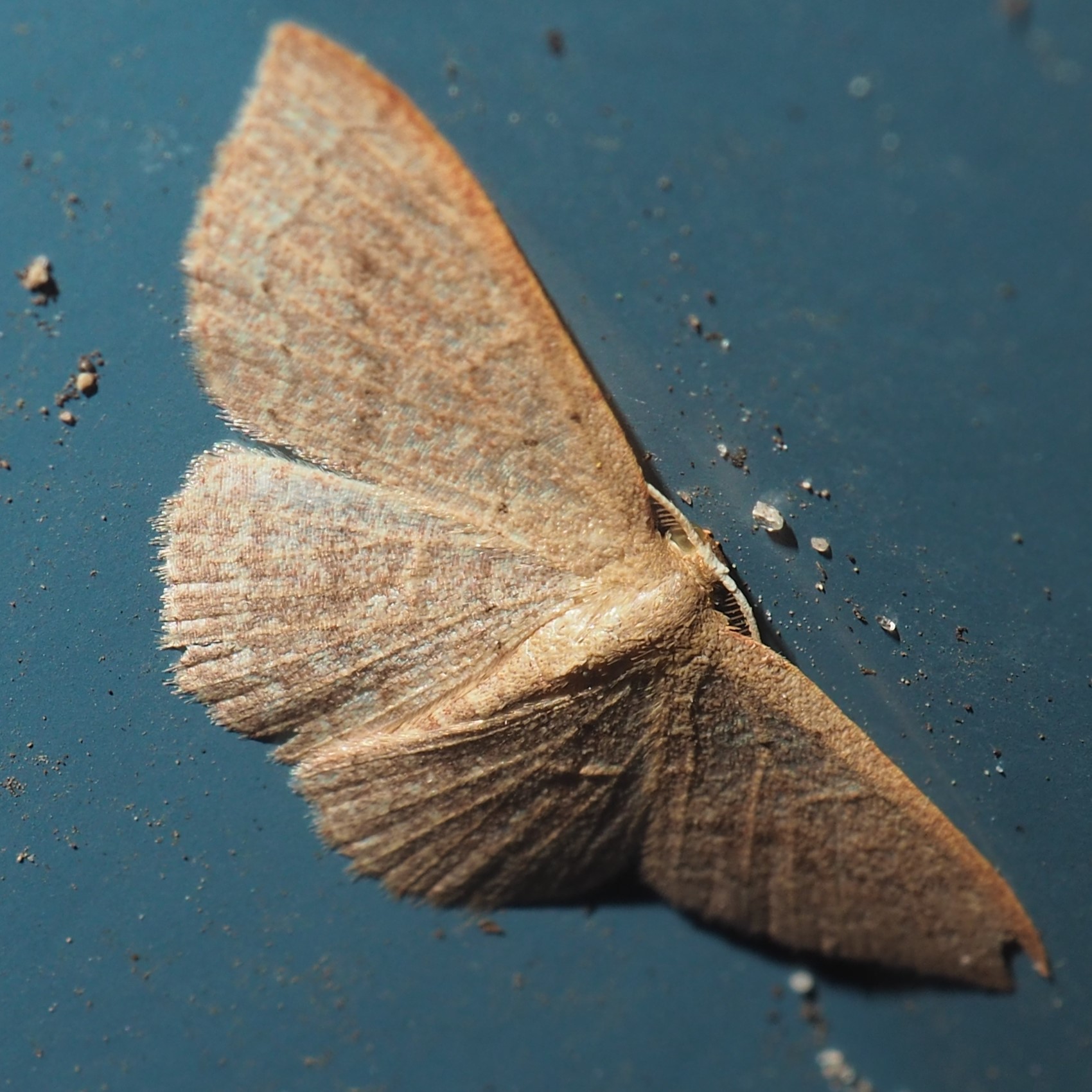
I hadn't seen many crickets for a few weeks, although their chirping has been ubiquitous all along. But this week I saw two kinds of Tree Cricket: Numbers 1 and 2 are a Narrow-winged Tree Cricket. Number 3 is the Pine Tree Cricket we saw last week. I also almost stepped on this Grasshopper. Brandon Woo and Tom Koffel both ID'd it as a Grizzly Spur-throat Grasshopper. (Melanoplus punctulatus). Apparently they like to live high up in a tree, like my huge Blue Spruce, but sometimes get blown down to the ground. This is the second time one has landed on the ground near or right on my shop wall.
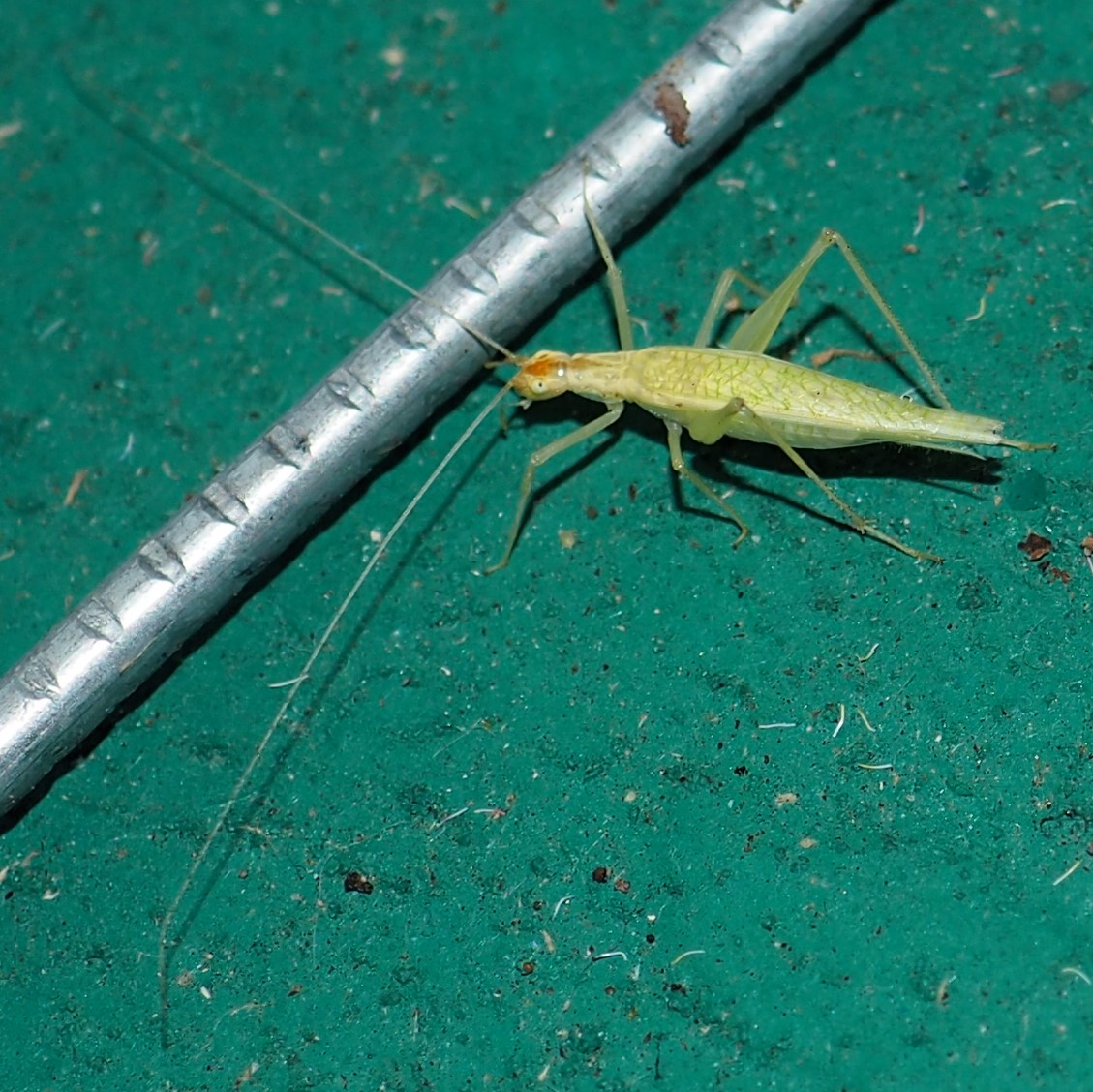
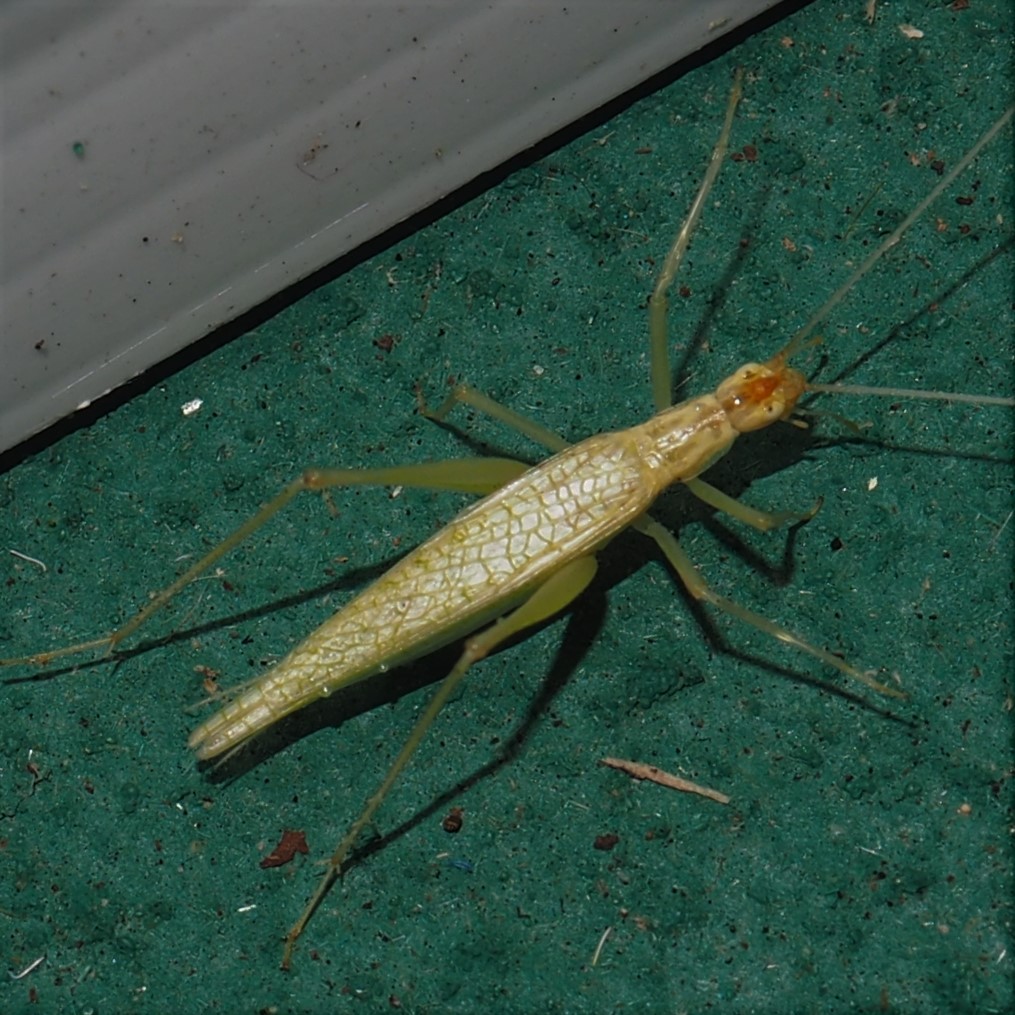
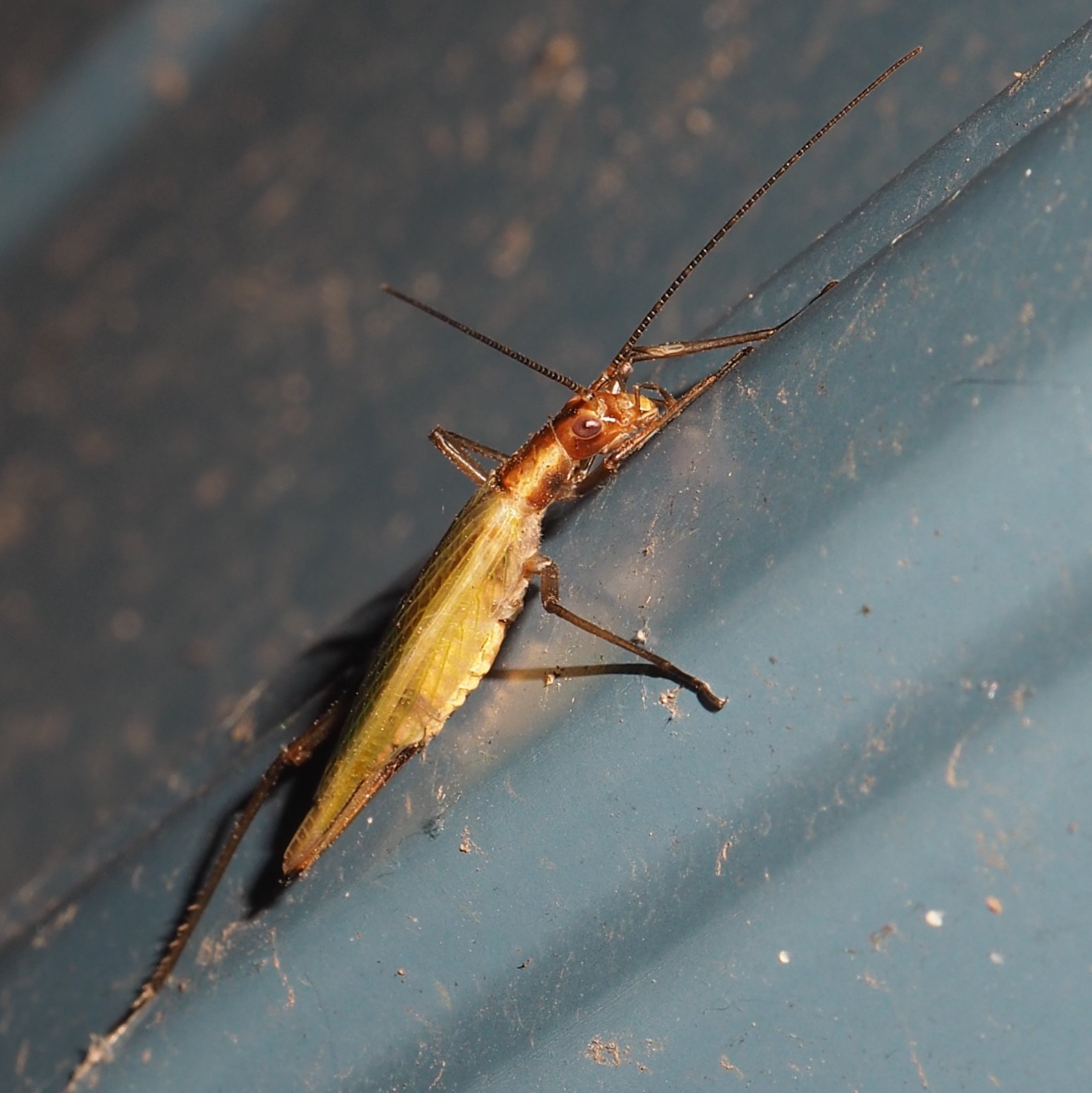
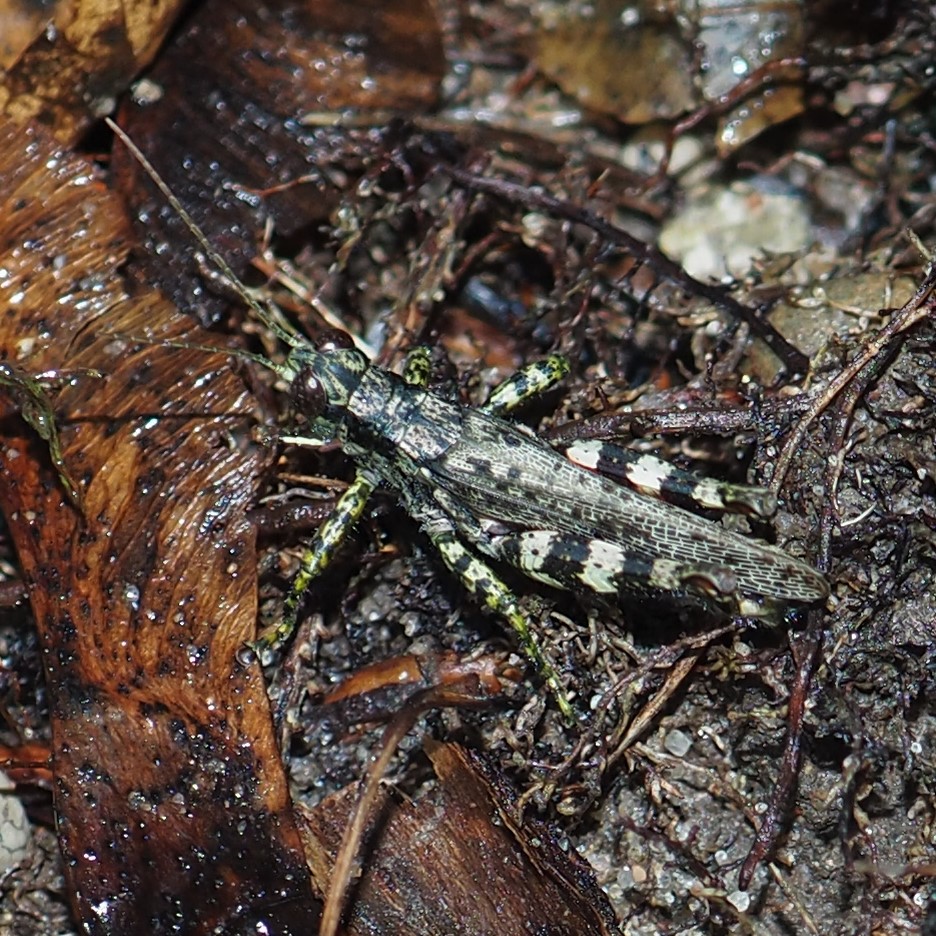
We seem to have reached Fly Land. We've seen most of the major flies around here, but some of them are so interesting that I can't stop myself from including them. Like this Crane Fly, Limonia annulata, that looks as if it was block-printed with a modern design. I don't remember seeing this second one before. Third is a Gall Midge. Look at those prickly antennae! And you know number 4 is a Moth Fly.

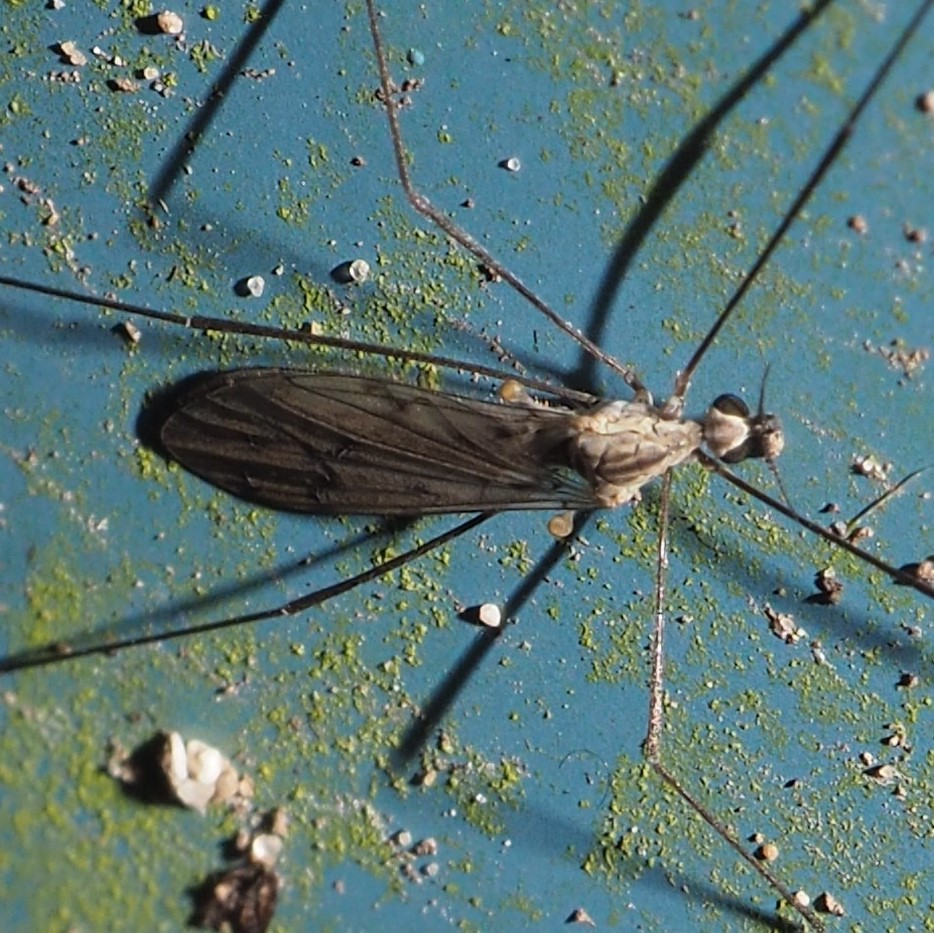


There are such a variety of Flies that look like our "ordinary" House Flies.
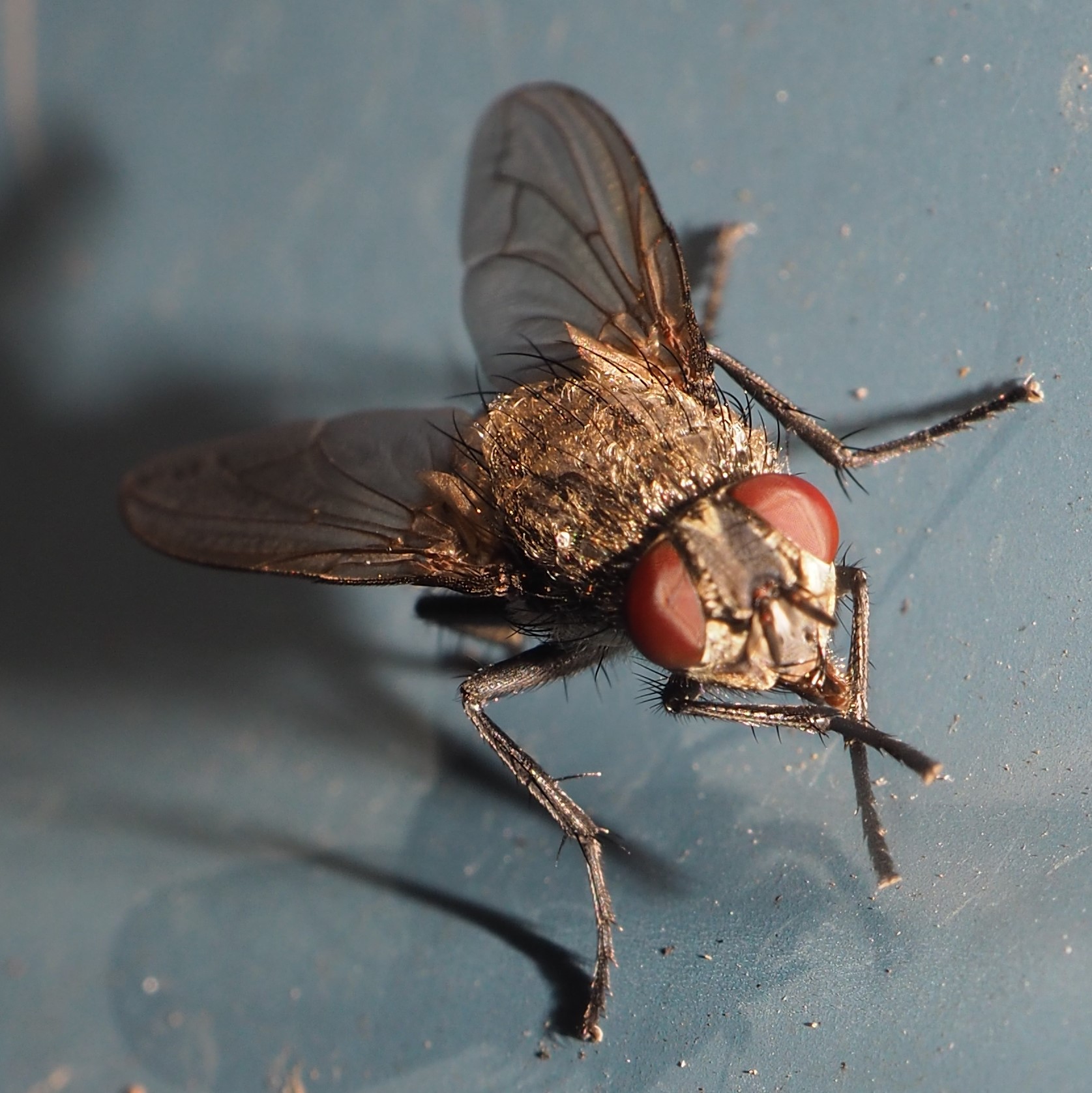
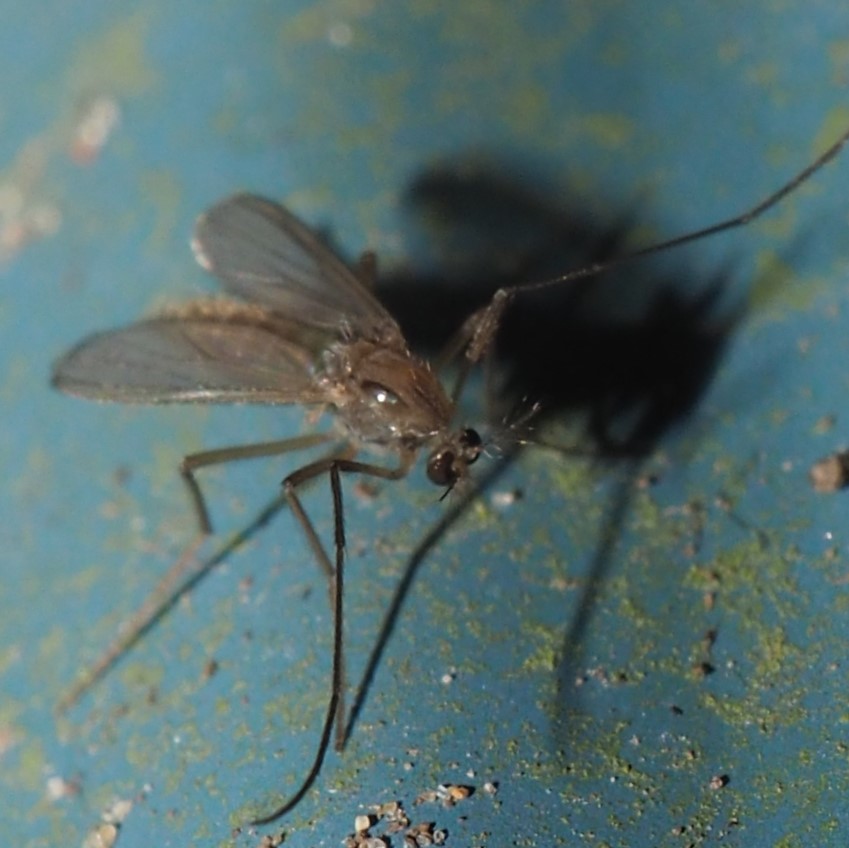
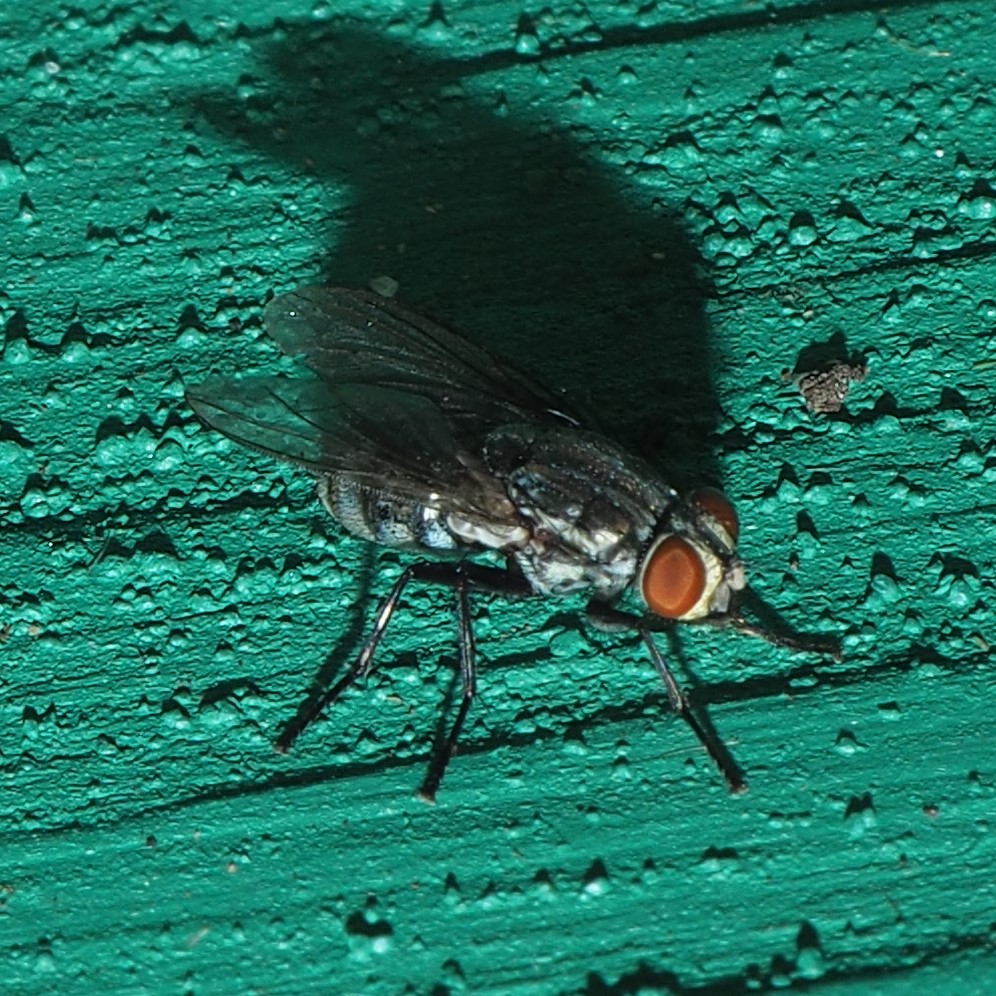
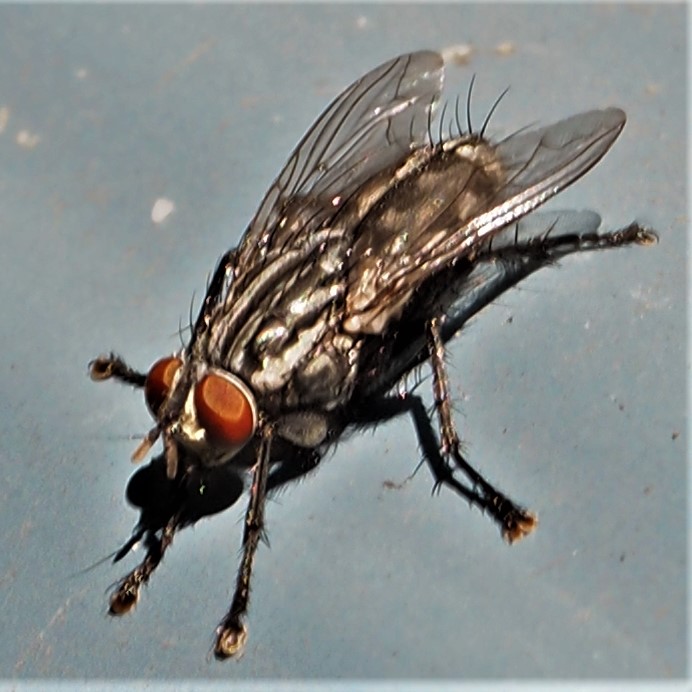
Here are two flies that have some resemblances, especially in the antennae shapes and the colors of the front legs. I wonder if they are different sexes of the same species... I like the way the middle one is holding its antennae like male deer in rutting season.

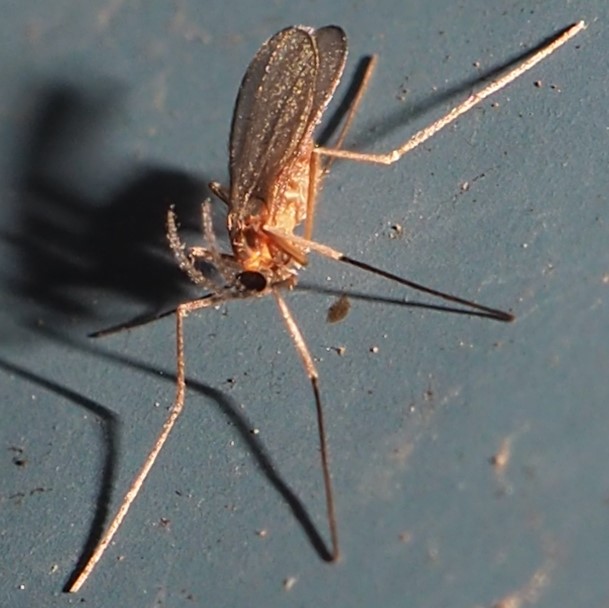
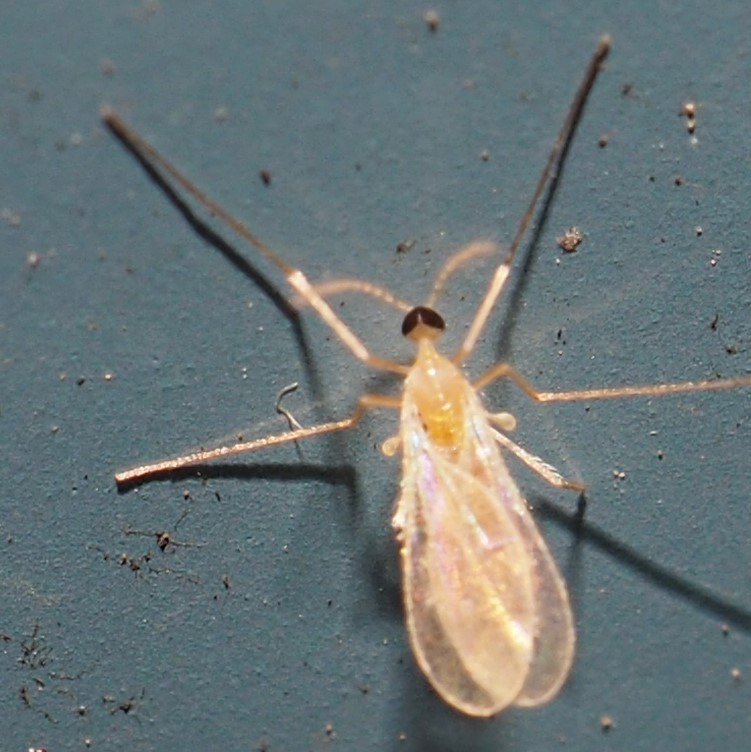
If you like Mosquitoes, you'll love these ones. Pictures 1 and 2 are of the same Mosquito. You can tell it's a male from the ornate antennae. The bright green eyes slay me! Third is our usual pal. As soon as it sees you, it wakes up and from then on until you can splat it, it will be after you. I don't know whether the vectors for Equine Encephalitis are around here. The County was threatening to spray for them. Who knows what that will do to all the good bugs!
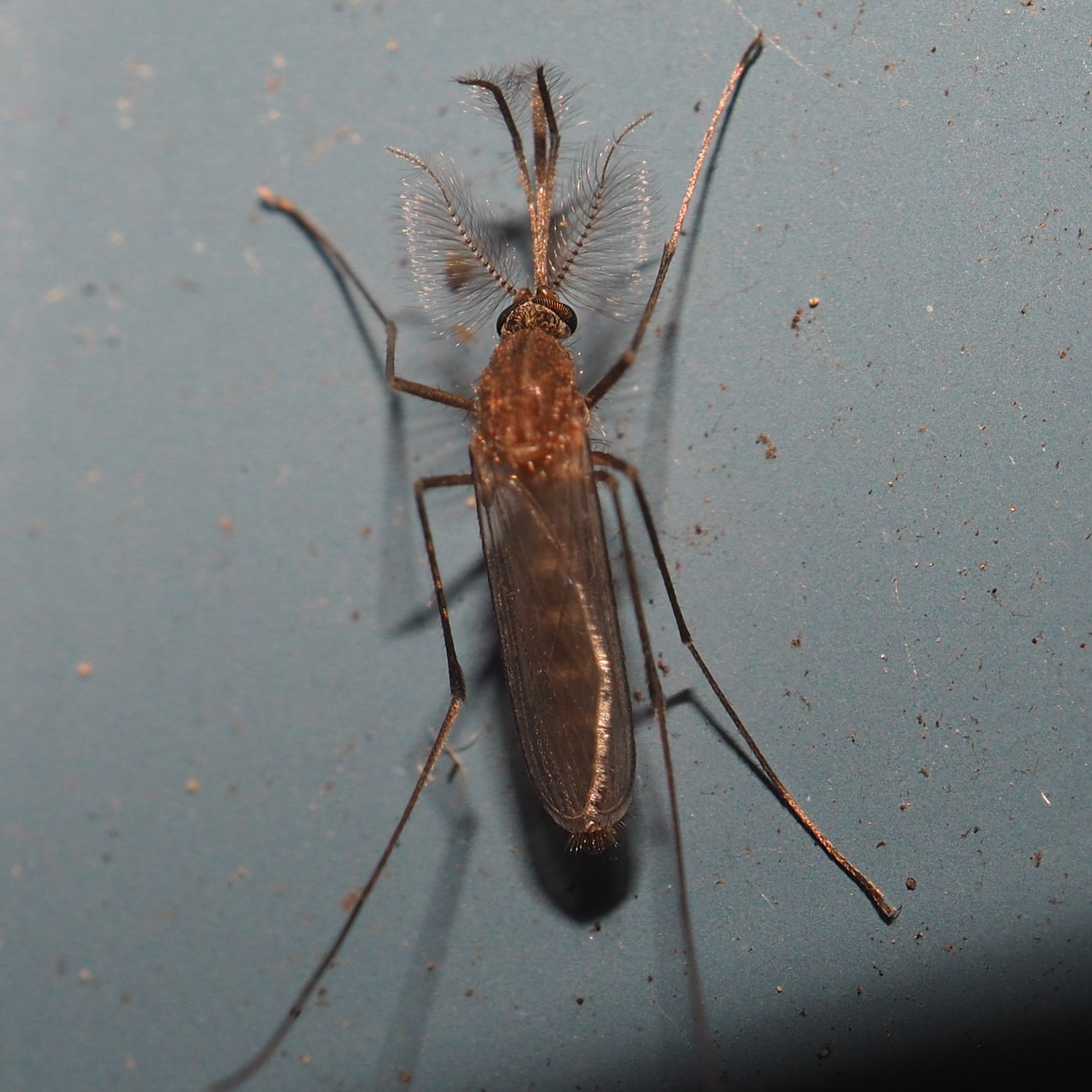
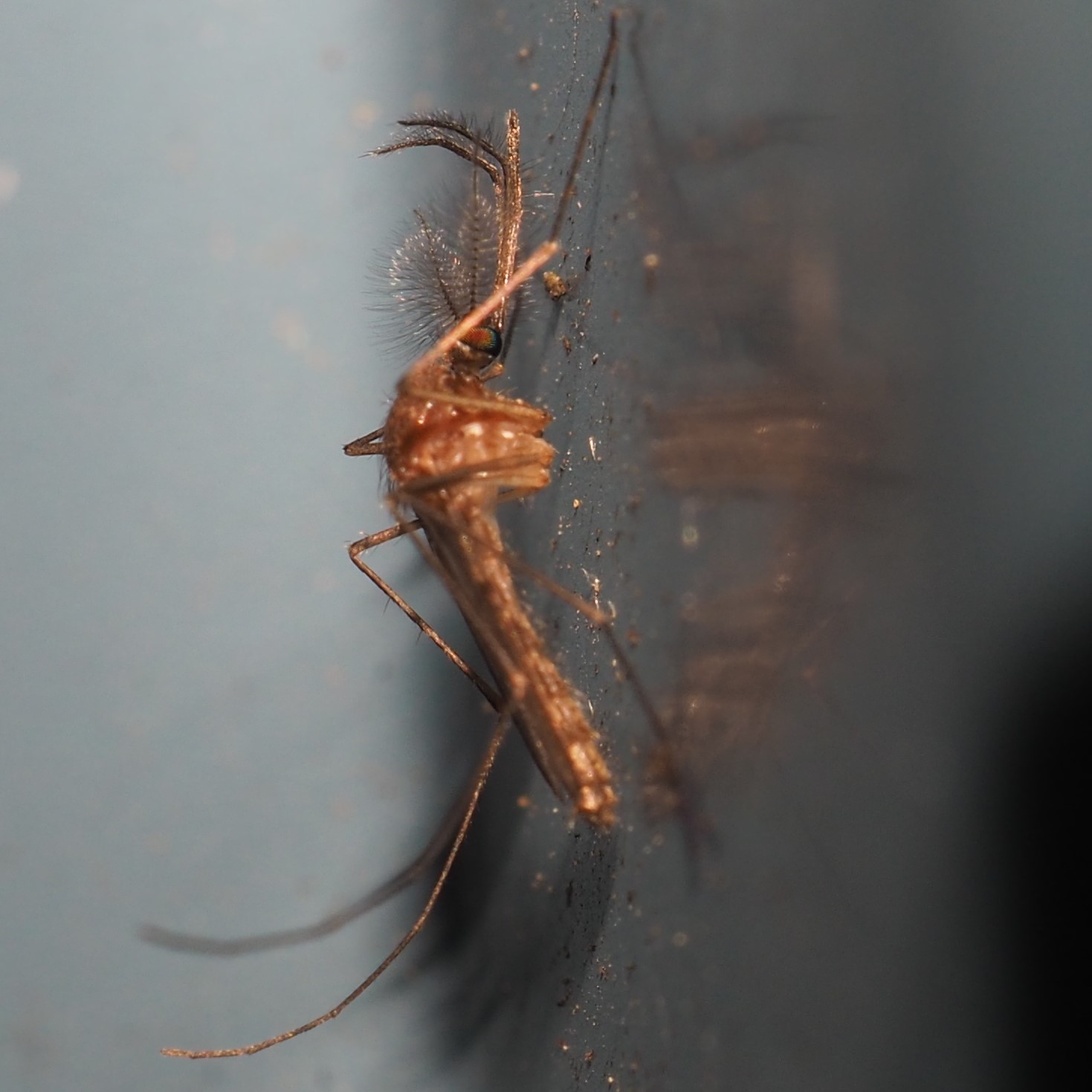
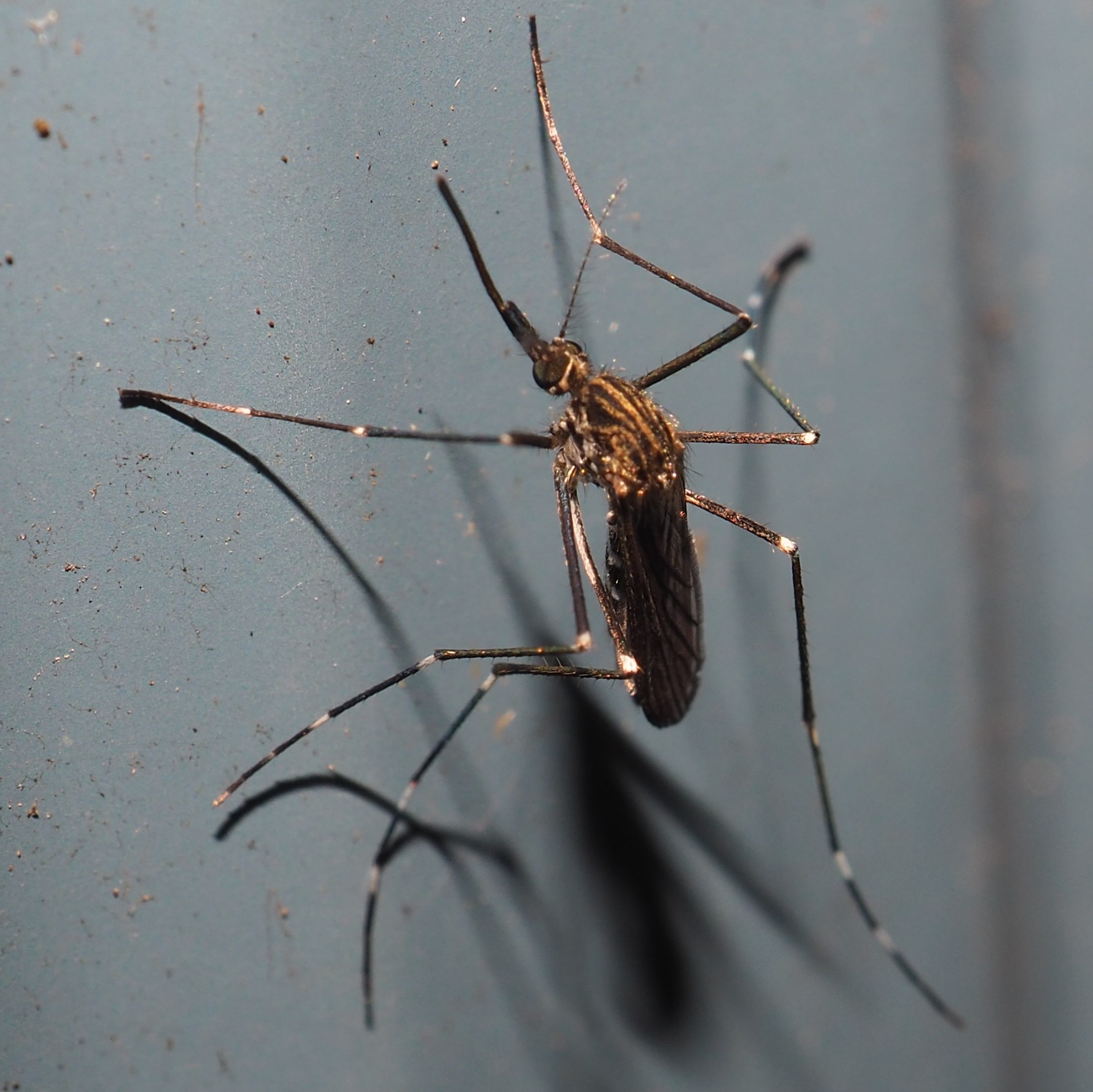
We've seen this Orange Fly so often I might not have shown it yet again, but since my son Chaim has started pushing me to use the F-stop to get a more overall focus, some pictures are coming out much clearer. Not all, of course. I'm adding in this fuzzy Fungus Gnat that just flunked the test. (I had set the aperture at 9.1, but obviously didn't focus very well at all!)
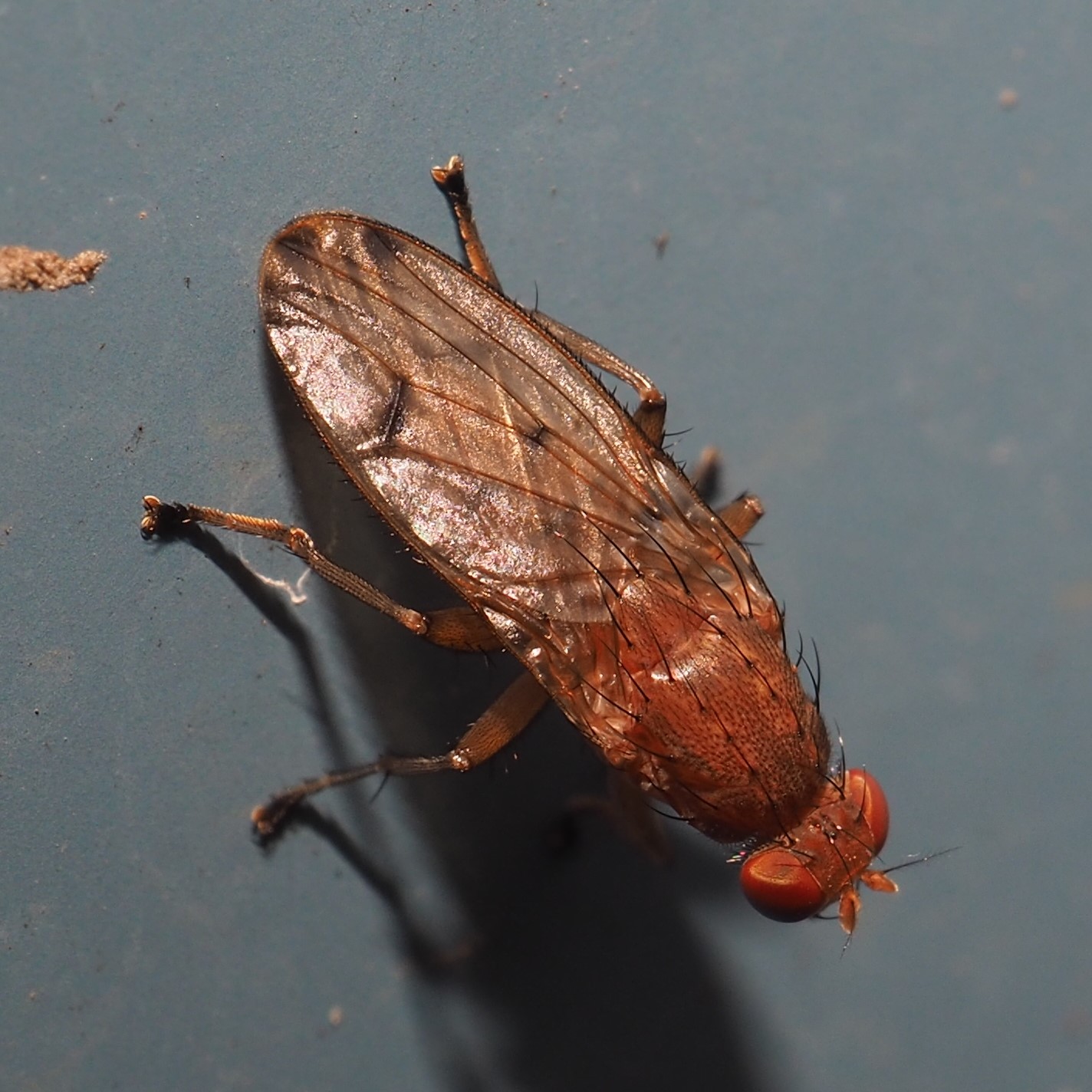
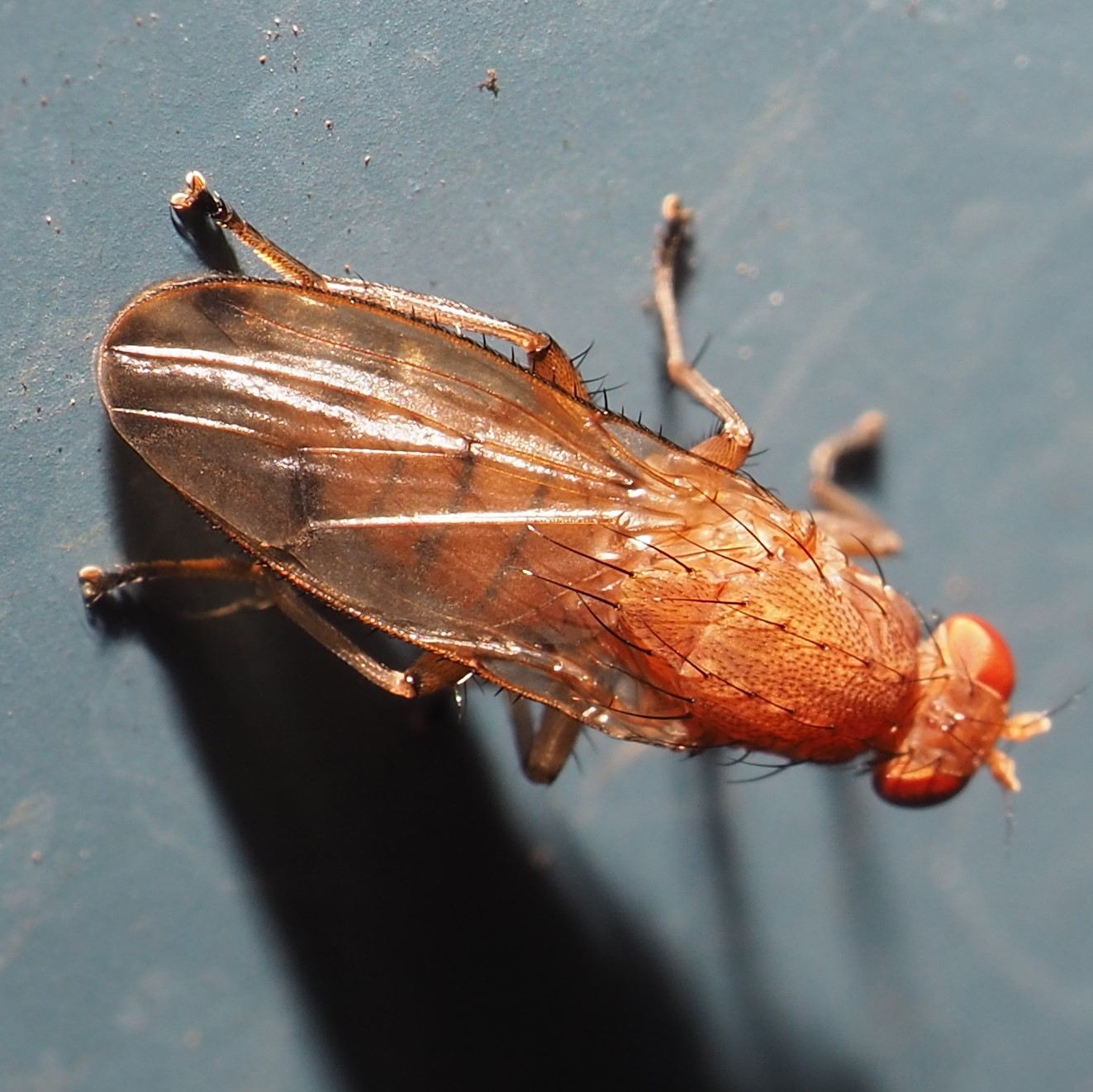
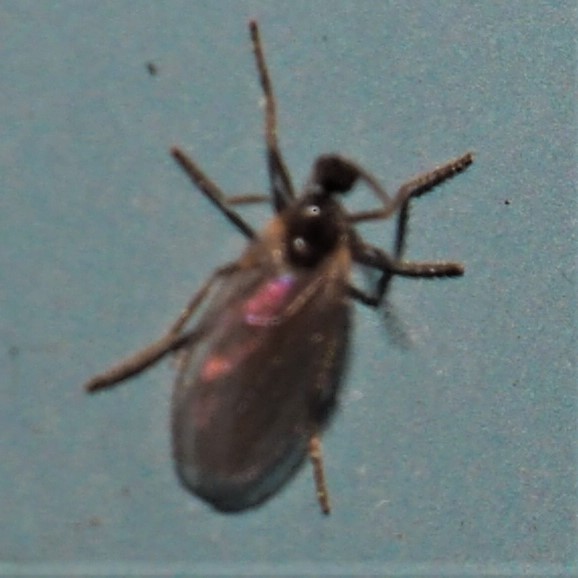
No Froggy. The fishes are alive but cooling their heels most of the time since the weather is so grey! So we might as well go look at our pet spiders. I like the flower-shaped splotch on this Common House Spider. I also admire the way this one is handling its prey that looks like a fresh-baked pastry. I wonder what the Trump-faced one is grasping.
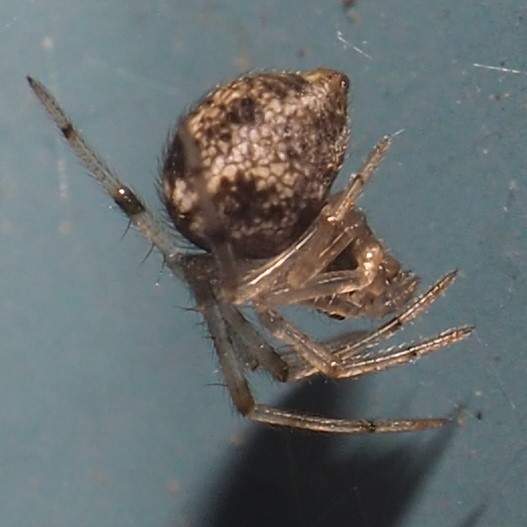
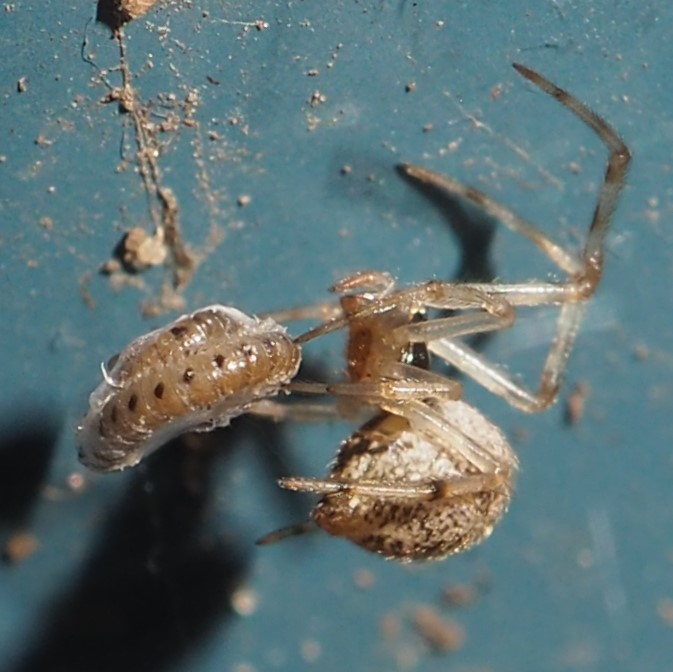
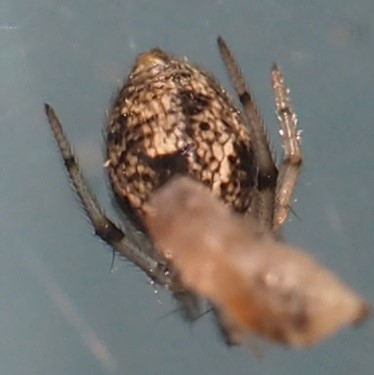
This mystery Spider looks like a nice round Cobwebber. The second one I've no idea what it might be. Nor the third, though at first I was thinking it might be a Pirate Spider - but that was probably wishful thinking since I haven't seen one for sure for quite a long time!
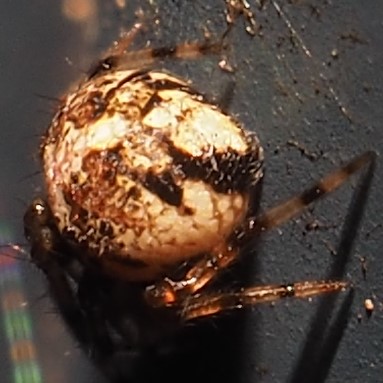
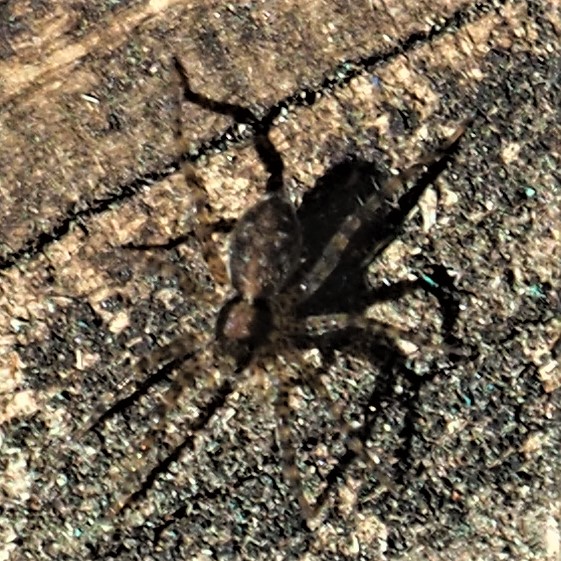
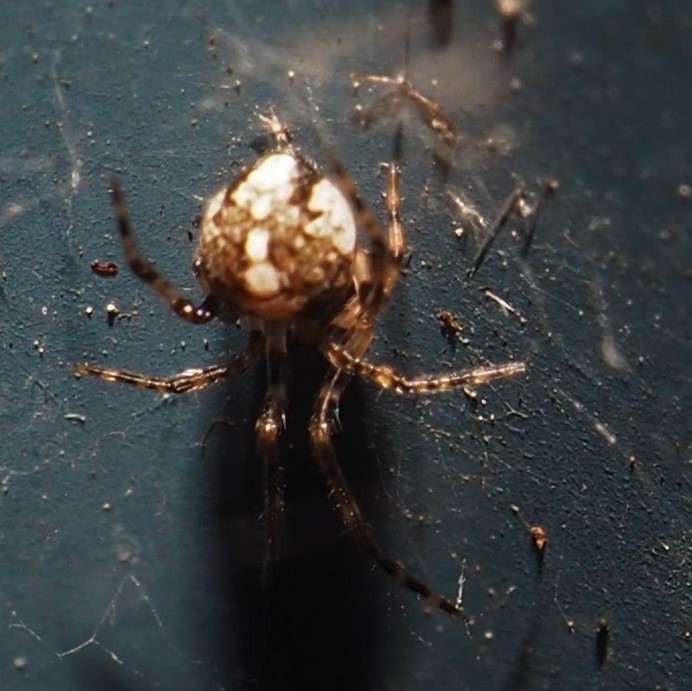
The good news is that a Cross Orbweaver stayed around in its beautiful web for a week or two. This one might even be from my friend Susan's front steps. The second one was in my yard, and you can see the beautiful design on its back. Third and fourth are two views of that exquisite web.

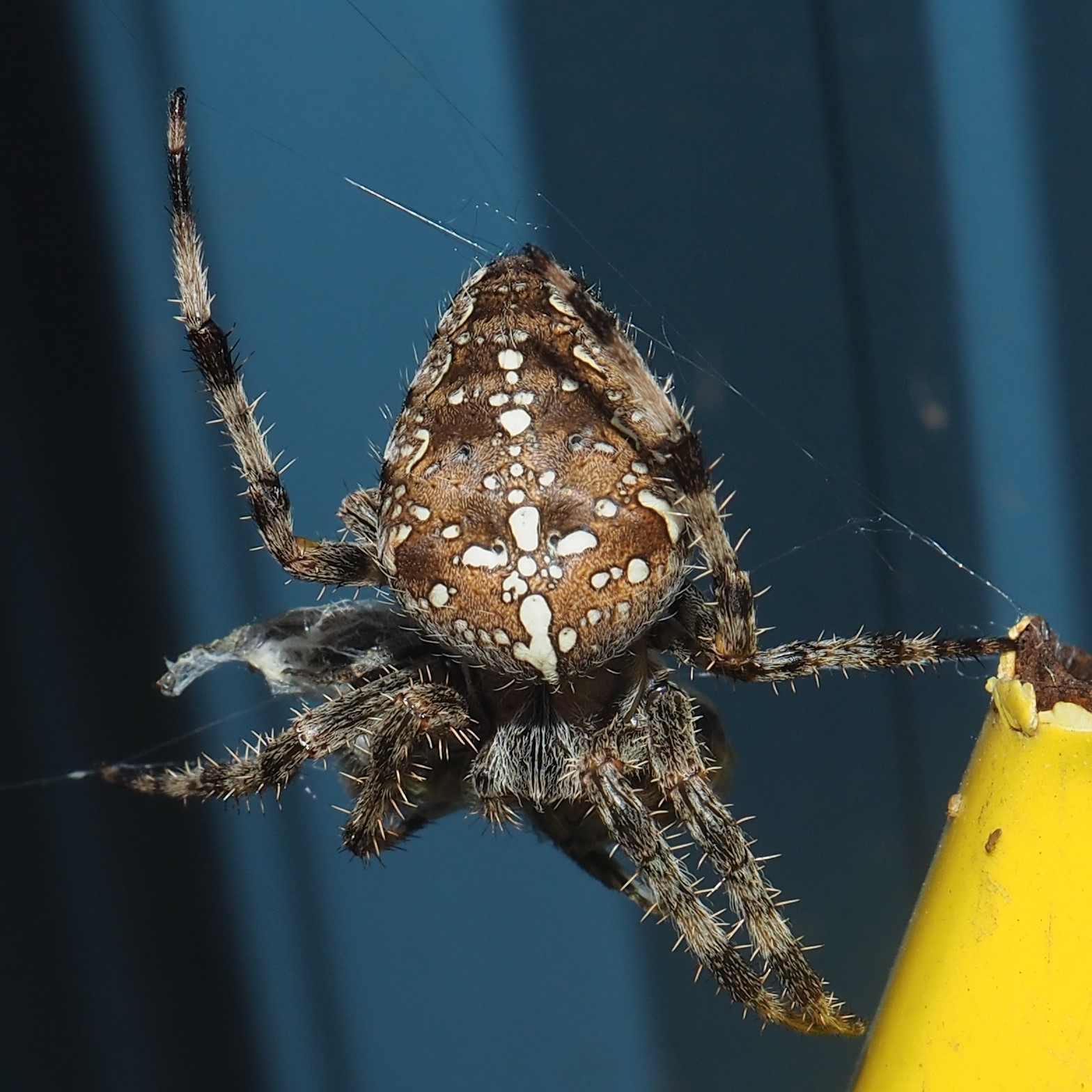
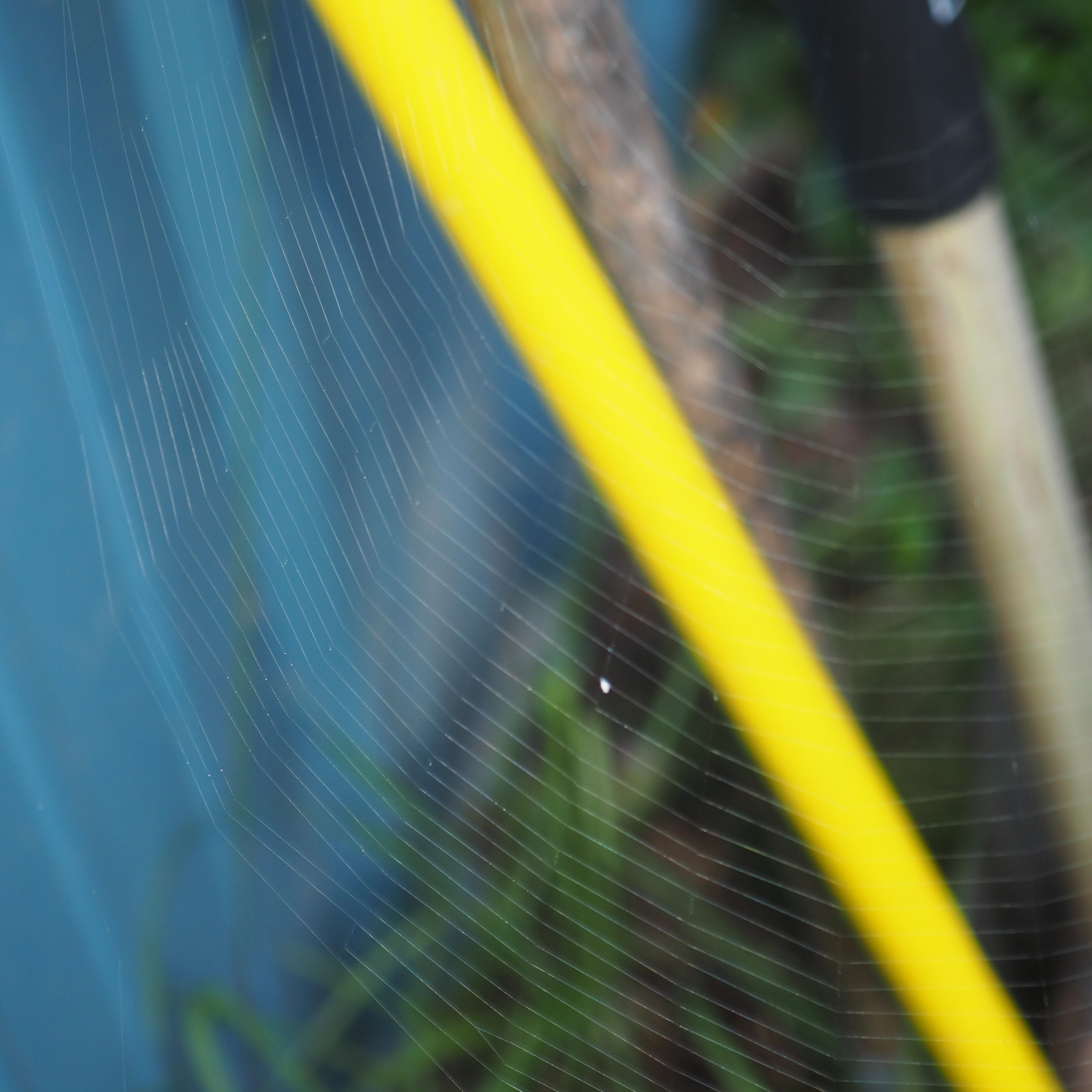
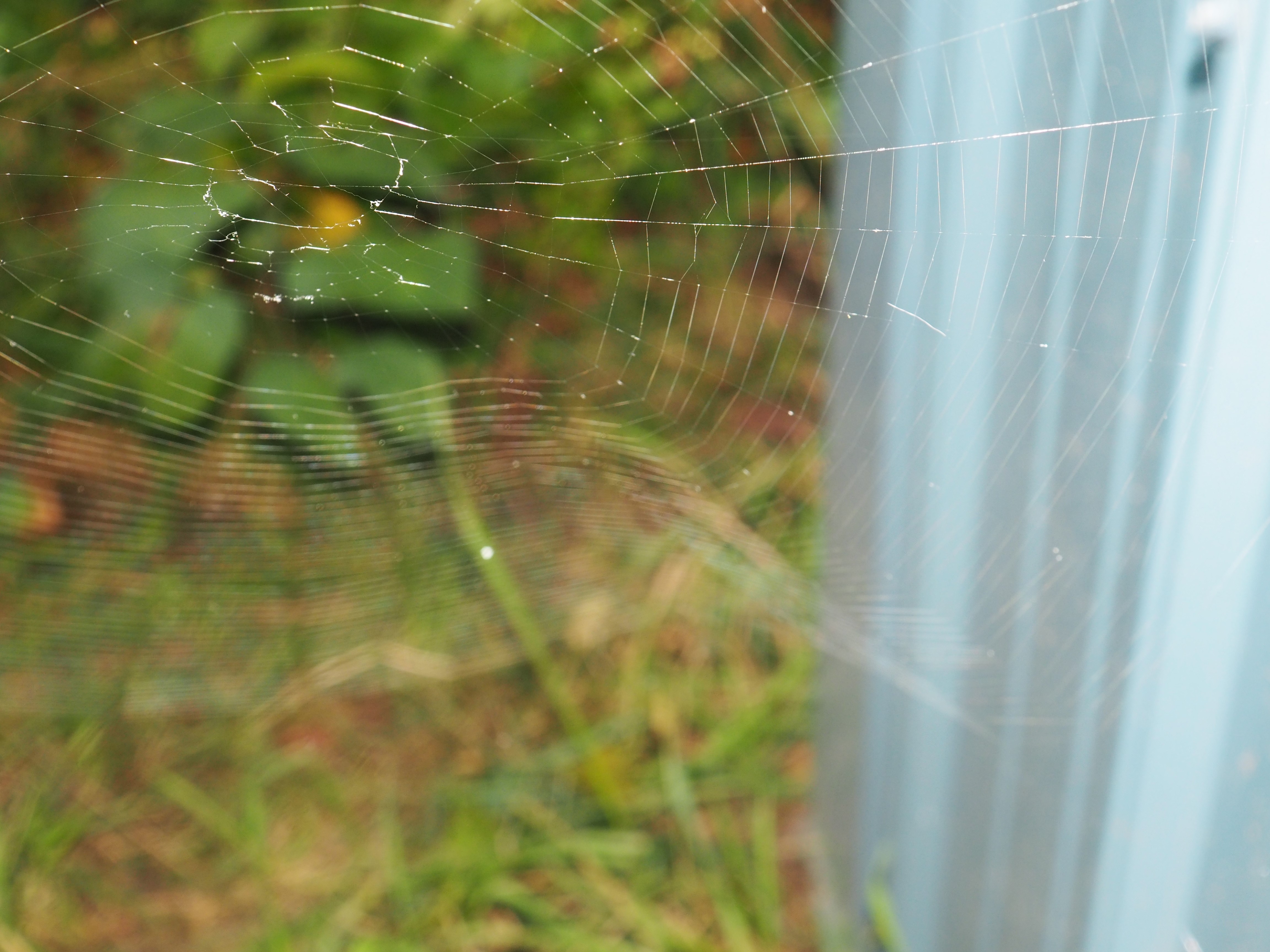
That's about the end of the story, unless you want to hear the story of why this blog is a bit late. Well, Friday afternoon I was out taking the last photos for this edition when I heard my son calling from the upstairs. He had heard a loud boom and thought I must have fallen down the stairs. Shockingly, we seemed to have had one of those little earthquakes - the wall and ceiling next to the old fireplace in the living room were torn open and the mantel was hanging at a distressing angle. Fortunately the painting and stained-glass window that were sitting on that mantel had not slipped off. Very unnerving to say the least. Upstairs in my room right above the fireplace a rip had continued up the wall next to my bed. Back downstairs the door between the kitchen and dining room would not close due to much more settling than usual (when we have these minor quakes). I called the police to see if there had in fact been an earthquake. Several officers came over and decided they wanted to see the basement. Did I use "shockingly" before in this narrative? Well, I retract that and put it here. Shockingly the basement was full of bricks. The chimney had collapsed inside the house. (I'd had the original chimney removed from the attic and the roof about ten years back.) Finally I found a contractor who came over - it was by now suppertime and this was one of two who had actually had a real telephone listed on the web and had answered my call. Saturday morning one of them came over and braced up some of the beam-work in the basement. Today the insurance company came over to assess the scene and decided that this damage wasn't covered. Rats! is a substitute for some of the colorful phrases that came to mind. The helpful contractor gave me the name of a good brick mason, who actually answered his cell phone and came over and said he could do the brick removal from the basement and all the way up the house. Then his brother would fix the drywall which will have to be removed to get at the bricks. That's why this blog is short and late. OK??
Here are a few scenes from Friday in the basement. First the general rubble. Second the basement ceiling. Third an interesting remnant of brick-work. That's it.



Let's see some of the bits of color outside. One last pink Zinnia flower. A bit of that late daisy plant. Oh - that Saffron Crocus that I mentioned last week in conjunction with the Colchicums. I was wrong - the Saffron comes up with a flower but no leaves, just as the Colchicum does.
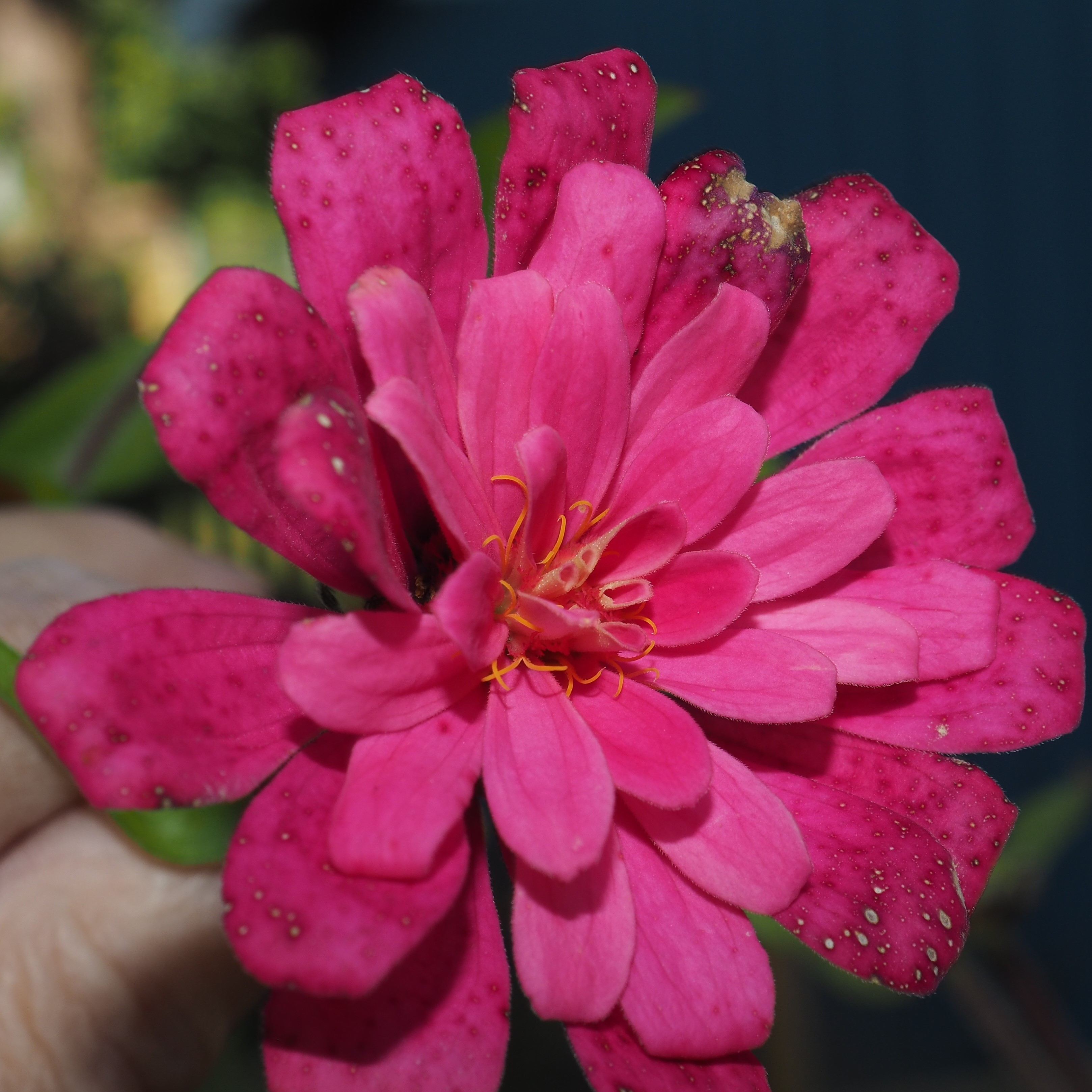
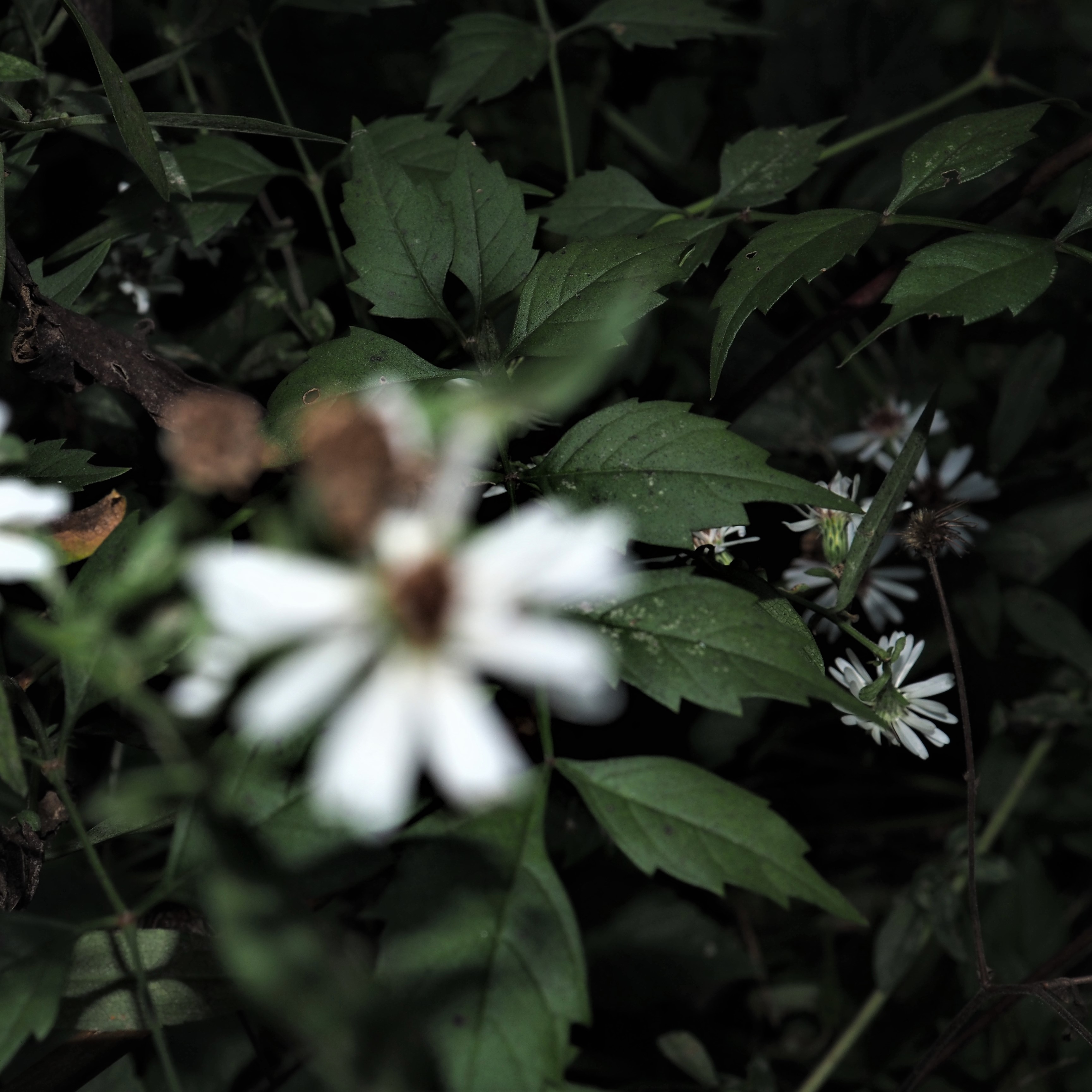
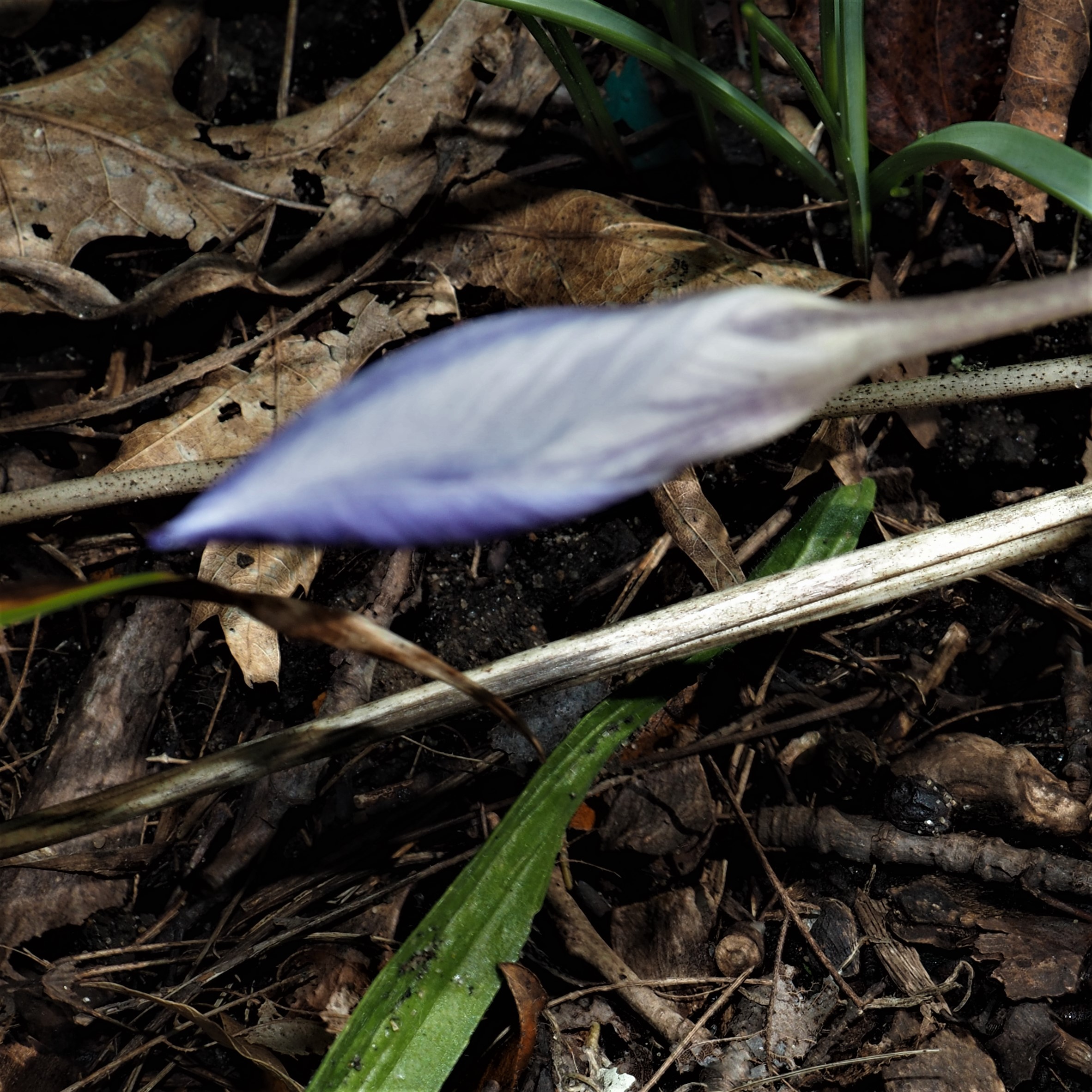
That's about the end of the story of my interesting week, and how the dog ate my blog. I hope that you are all safe in your homes. I am surviving this episode - a house built in 1890 is allowed some old-age problems too. I think all will be well - don't know when, but this story will end with a safer house. I HOPE.
Love, Martha
Back to October 6, 2019
Forward to October 20, 2019
Back to main menu
copyright Martha O'Kennon 2019

















































































